
A COLLECTOR’S EYE
F.C.F. Valentine | Post-War Prints
Alistair Grant | A Sense of Place





F.C.F. Valentine | Post-War Prints
Alistair Grant | A Sense of Place



The F.C.F. Valentine Post-War Print Collection features an impressive lineup of iconic artists from both the UK and abroad, reflecting the radical shift that occurred in the arts after the Second World War. Many of these artists represent a new era of art by individuals eager to express themselves and challenge traditional perceptions of art. The Valentine Collection was assembled by a single collector in Edinburgh.
Our second collection is from the estate of Alistair Grant (1925-1997). During his lifetime as a painter, printmaker, and Professor, Grant was an integral part of the artistic and printmaking life in London. For thirty-five years Alistair Grant and printmaking at the Royal College of Art in London were indivisible. Grant was an inspirational teacher and artist who taught many of his peers. He is a direct contemporary of many of the artists featured in the Valentine collection including Peter Blake, Patrick
Caulfield, Robyn Denny, Tim Mara and Joe Tilson. Grant held a solo exhibition with The Scottish Gallery in London in 1990.
Serendipity brings these two collections together. A Collector’s Eye celebrates the Valentine Collection, and we are delighted to reevaluate Alistair Grant’s life and work with a selection of prints, lithographs and paintings from throughout his career.
The Gallery would like to thank F.C.F. Valentine for his contribution to this publication and for being an inspiration. He has demonstrated that collecting is a passion that continues to evolve, even in his 90th year. F.C.F. Valentine will be donating proceeds from any sales from his collection to the City Art Centre in Edinburgh to support future acquisitions. We would also like to thank Emma Mason for her invaluable contribution and help with the Alistair Grant estate.
The Scottish Gallery


I am 90 years old and have witnessed several different political and economic eras in my lifetime. I was born in Edinburgh and my parents worked in India. At 6 months, I was in Burma, one of the last children of the Raj. A delightful, interesting, and privileged life. We returned to Scotland in September 1939 just as the War started. I ended up attending seven different schools, studying first sciences, then arts, before ending up at UCL Anthropology. I had already started buying books on philosophy, religion, and many other topics. I studied Economics with Social and Economic History at Edinburgh, then Moray House and I taught in schools for ten years until I transferred to the Civil Service in London.
My sister and I were introduced to the Edinburgh Festival in 1947 and went to the exhibitions at the RSA and I still have some of the catalogues from that era. I started collecting when I went to UCL in London, in 1957, in junk shops. I began collecting prints, pictures, and sculpture. These included prints of Matisse, Beardsley, and others as well as Gould prints from the Birds of Paradise book. For me, collecting has been partly fortuitous depending on where I have happened to live and what was available
at the time and what I could afford.
Most of the recent collection of prints have been acquired since I retired over thirty years ago. In Edinburgh I became intrigued by the art made during my lifetime and what it represented. Prints are just such a vast subject and has been an artistic medium for centuries, which therefore means, like painted works the subjects can cover much of the same ground. The art of the postwar period has explored many themes. It was an era that rejected the politics on the pre-war period and so opened many avenues to explore. The geometrical abstract was a plain rejection of the past, as did Malevich many decades before. There was also Pop, which rejected the past in a more ‘thumb on the nose’ way. I consider Paolozzi delves much deeper into his subject and is not just a Pop artist but one who recognised that the modern world was a complete jumble of data from all of the periods of time and place, confusing us all, all the time. I like order and structure, so I respond to abstract art and solid colour fields. The proceeds from the sale of part of my collection will be donated to the City Art Centre in Edinburgh and I am beginning a new collection in a new era.
F.C.F. Valentine
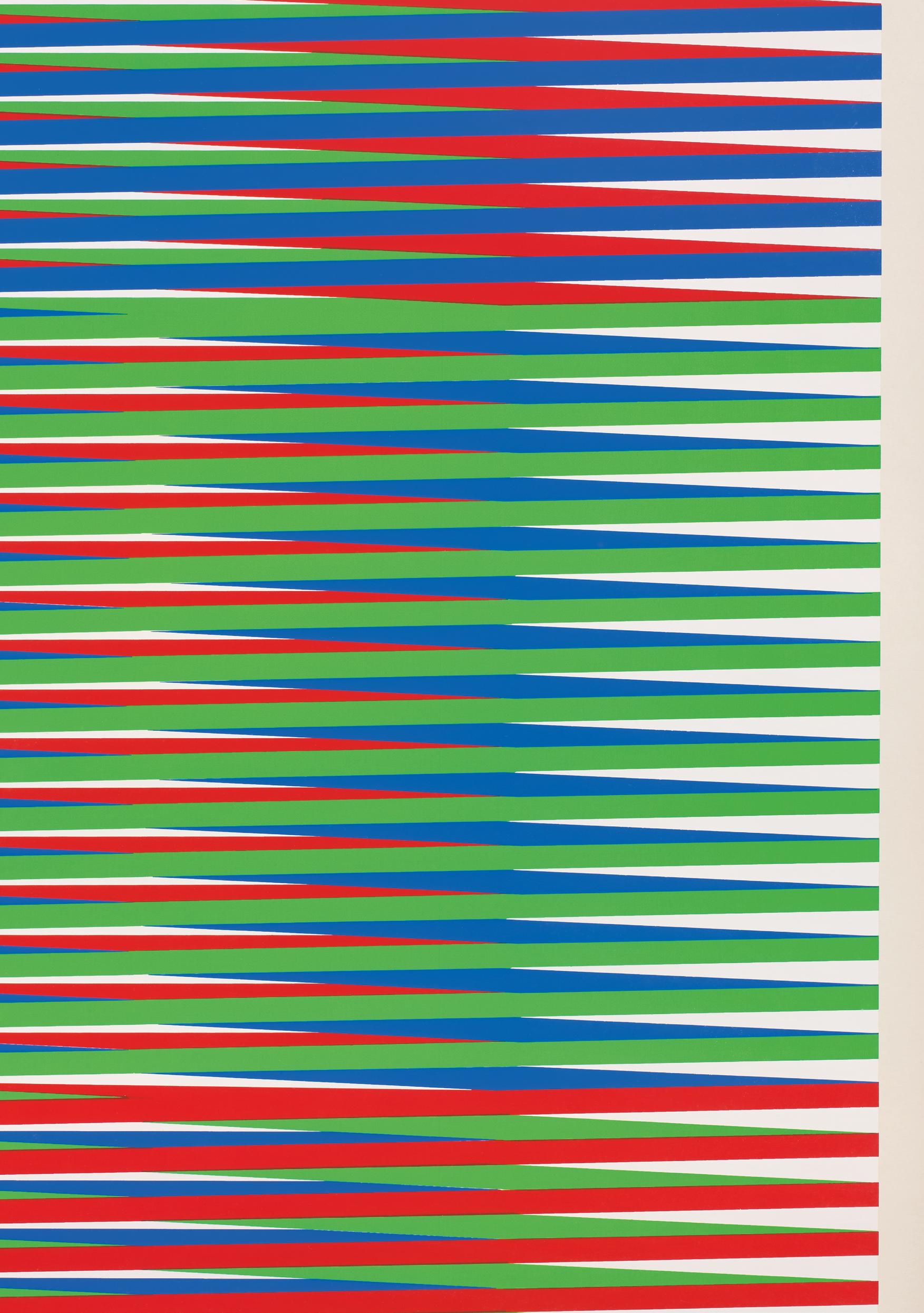
JOSEF ALBERS
PETER BLAKE
PATRICK CAULFIELD
MICHAEL CRAIG-MARTIN
CARLOS CRUZ-DIEZ
SONIA DELAUNAY
ROBYN DENNY
BARBARA FREEMAN
GORDON HOUSE
TIM MARA
PATRICK PROCKTOR
FRANK STELLA
JOE TILSON
VICTOR VASARELY
Josef Albers, a German-born American artist, was a leading figure in 20thcentury art education. He enrolled at the Weimar Bauhaus in 1920 as a student before transitioning to a teaching role in 1922, focusing on handicrafts. When the Bauhaus relocated to Dessau in 1925, Albers became a professor and married fellow artist Anni Albers. During his time in Dessau, he designed furniture, worked with glass, and collaborated with other notable artists, including Paul Klee (18791940). After the Bauhaus was closed under Nazi pressure in 1933, Albers emigrated to the United States, where he was appointed head of the painting department at Black Mountain College in North Carolina, a position he held until 1949. In 1950, he moved to Yale University to lead the design department. Albers’s teaching approach, which emphasized
hands-on experience and visual perception, significantly influenced post-war Western visual art. His 1963 book Interaction of Colour remains a foundational text on colour theory.
Alongside his academic role, Albers was also an active abstract painter, most renowned for his Homage to the Square series, where he meticulously explored colour interactions through nested squares. He also created several murals, including those for the Corning Glass Building and the Time & Life Building in New York City. In 1970, Albers and his wife moved to Orange, Connecticut, where they continued their studio practice. In 1971, he made history as the first living artist to be honoured with a solo exhibition at the Metropolitan Museum of Art in New York.
1 Plate 1 (from 1 - 5 Vice Versa), 1971 screenprint, 34.5 x 69 cm edition 5/10 titled and editioned lower left, signed and dated lower right
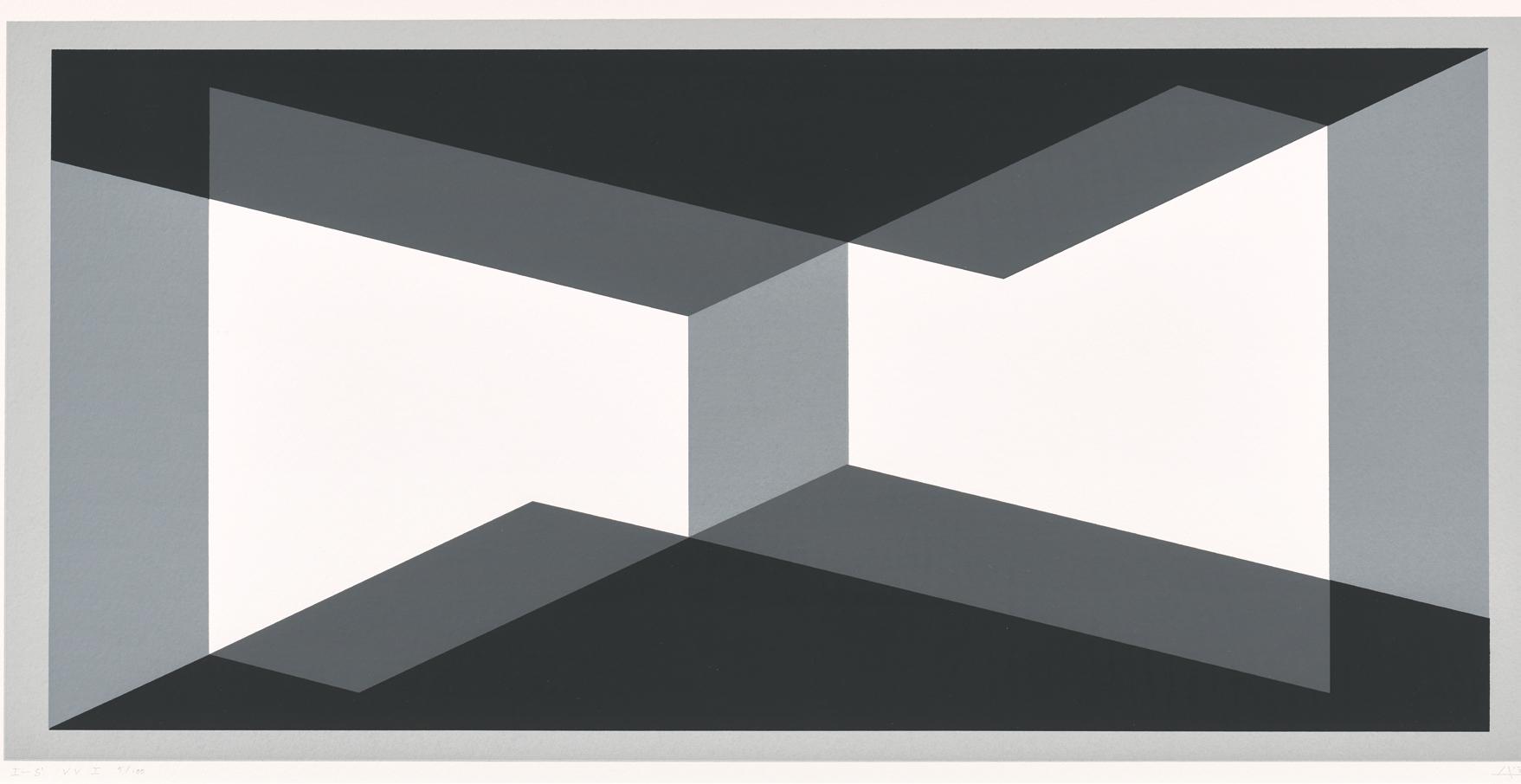
Sir Peter Thomas Blake CBE RDI RA is an English Pop artist, renowned for his interest in the imagery of popular culture. His distinctive work has been central to the British Pop Art movement. He was knighted in 2002 for his contributions to the arts.
Born in Dartford in Kent, Blake studied at Gravesend Technical College School of Art and the Royal College of Art. By the late 1950s, his artworks began to incorporate elements from the worlds of advertising and entertainment, the distinct imagery that would define the rest of his career. Blake participated in group exhibitions at the Institute of Contemporary Arts and gained significant recognition in the 1961 Young
Contemporaries exhibition, where he showcased his work alongside David Hockney and R.B. Kitaj, marking his association with the British Pop Art movement. That same year, he won the John Moores Junior Award for his piece Self Portrait with Badges
Blake’s broader public profile grew after he appeared in Ken Russell’s 1962 BBC television film Pop Goes the Easel alongside fellow artists Pauline Boty, Derek Boshier, and Peter Phillips. Blake is perhaps most famous for his iconic sleeve design for The Beatles’ 1967 album Sgt. Pepper’s Lonely Hearts Club Band . His other notable works include the album covers for The Who and the Band Aid single Do They Know It’s Christmas?
2 M is for Marilyn Monroe, 1991 screenprint, 76 x 55 cm edition 31/95
editioned lower left, titled lower centre, signed lower right

Patrick Joseph Caulfield CBE RA was an English painter and printmaker renowned for bold imagery that often blend elements of photorealism within simplified interiors. Born in West London, his family returned to their native Bolton in 1945. Caulfield left school at 15, taking up a position as a filing clerk at Crosse & Blackwell before moving to the design studio, where he worked on food display graphics and general administrative tasks. At 17, he joined the Royal Air Force, stationed at RAF Northwood. Partly, inspired by the 1952 film Moulin Rouge , which depicted the life of artist Henri de Toulouse-Lautrec, Caulfield began attending evening classes at Harrow School of Art.
From 1956 to 1960, Caulfield studied at Chelsea School of Art, where he won two prizes that funded a working trip to Greece and Crete. Here, he found inspiration in the Minoan frescoes and
the bright, vivid colours of Crete. One of his close friends was abstract painter John Hoyland, whom he met at the Young Contemporaries exhibition in 1959. Caulfield continued his studies at the Royal College of Art from 1960 to 1963, working alongside contemporaries such as David Hockney and Allen Jones. Caulfield taught at Chelsea School of Art from 1963 to 1971. In 1964, he exhibited at the New Generation show at London’s Whitechapel Gallery, which led to his association with the Pop Art movement—a label he resisted, preferring to identify as a formal artist. For many he is an artist whose name has now become synonymous with depictions of modern interiors. From dramatizing sunlight as it tilts through windows, or celebrating the formal beauty of everyday objects, Caulfield creates endlessly beguiling images that cross-examine the spaces we inhabit.
3 Curtain and Bottle, 1973 silkscreen print, 61 x 83 cm edition 52/72 signed and editioned lower right

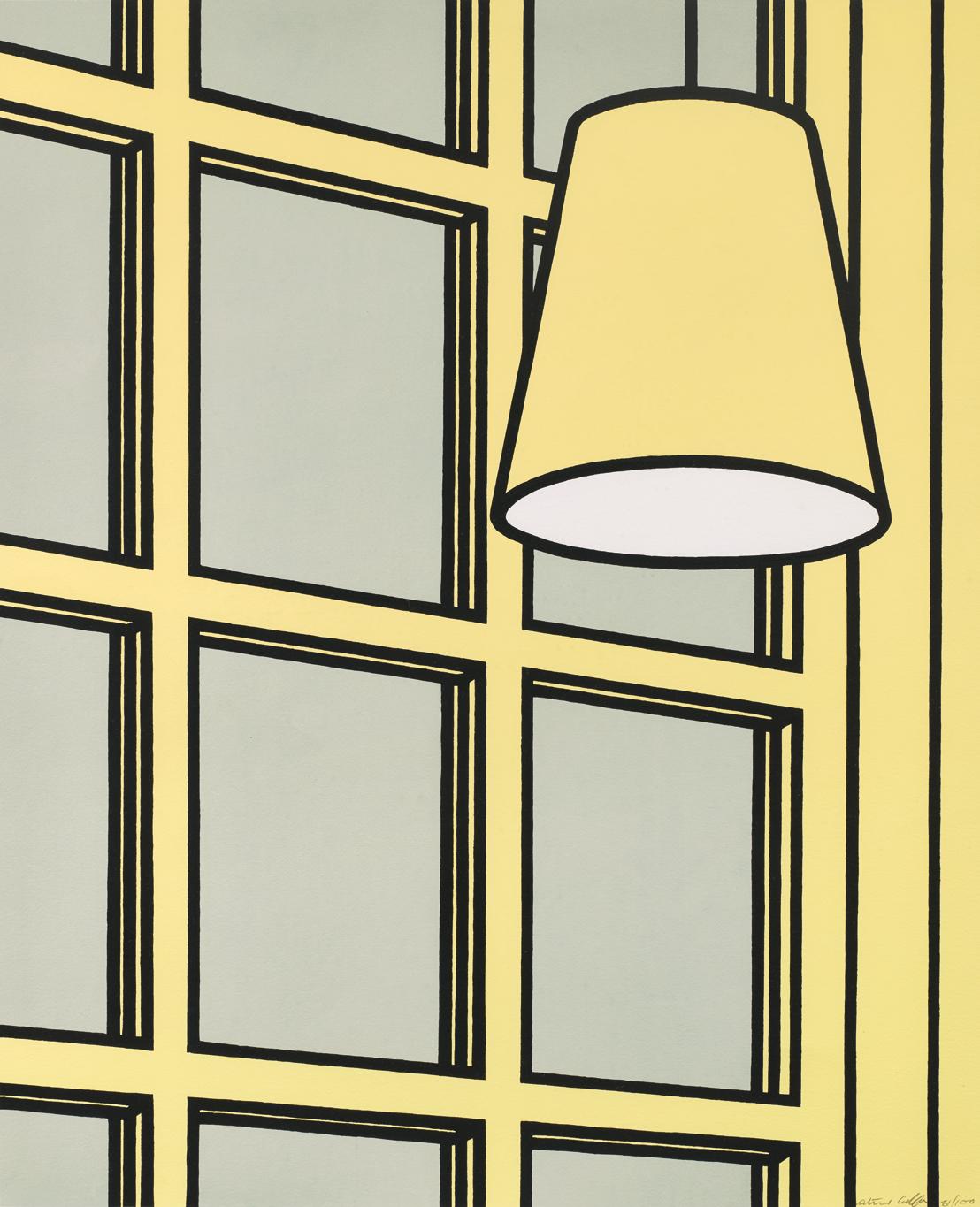
4 Interior: Morning, 1971 screenprint, 73 x 61 cm edition 81/100
signed and editioned lower right

5 Interior: Noon, 1971 screenprint, 73 x 61 cm edition 81/100 signed and editioned lower right

6 Interior: Evening, 1971 screenprint, 73 x 61 cm edition 96/100
signed and editioned lower right

7 Interior: Night, 1971 screenprint, 73 x 61 cm edition 25/100 signed and editioned lower right
‘I simply try to make a logical, a seemingly logical, space that could exist,’ Caulfield said of his interiors. Flattening the depth of field, he bathes sleek lines in warm colours that reflect sensations, making his work uncomfortable and uncanny.
Ashley Tan, Art UK
8 Tulips, 1973 screenprint, 58 x 81 cm edition of 72, Artist’s Proof signed and editioned lower right

9 White Pot, 1976 screenprint, 93 x 72 cm
edition 18/76
signed and editioned lower right

10 Pipe, 1972
screenprint, 86 x 56 cm
edition 26/72
signed and editioned lower right

Sir Michael Craig-Martin CBE RA is an Irish-born conceptual artist and painter, recognised for his influence on the Young British Artists, many of whom he mentored during his teaching career at Goldsmiths where he is now an emeritus Professor of Fine Art. In 2015, he published his memoir and guide for aspiring artists, On Being An Artist. In 2016 he was knighted in the Queen’s Birthday Honours for his services to art. His work is featured in numerous public collections.

11 Television and Notepad, 1997 screenprint, 32 x 108 cm edition 29/50 signed verso
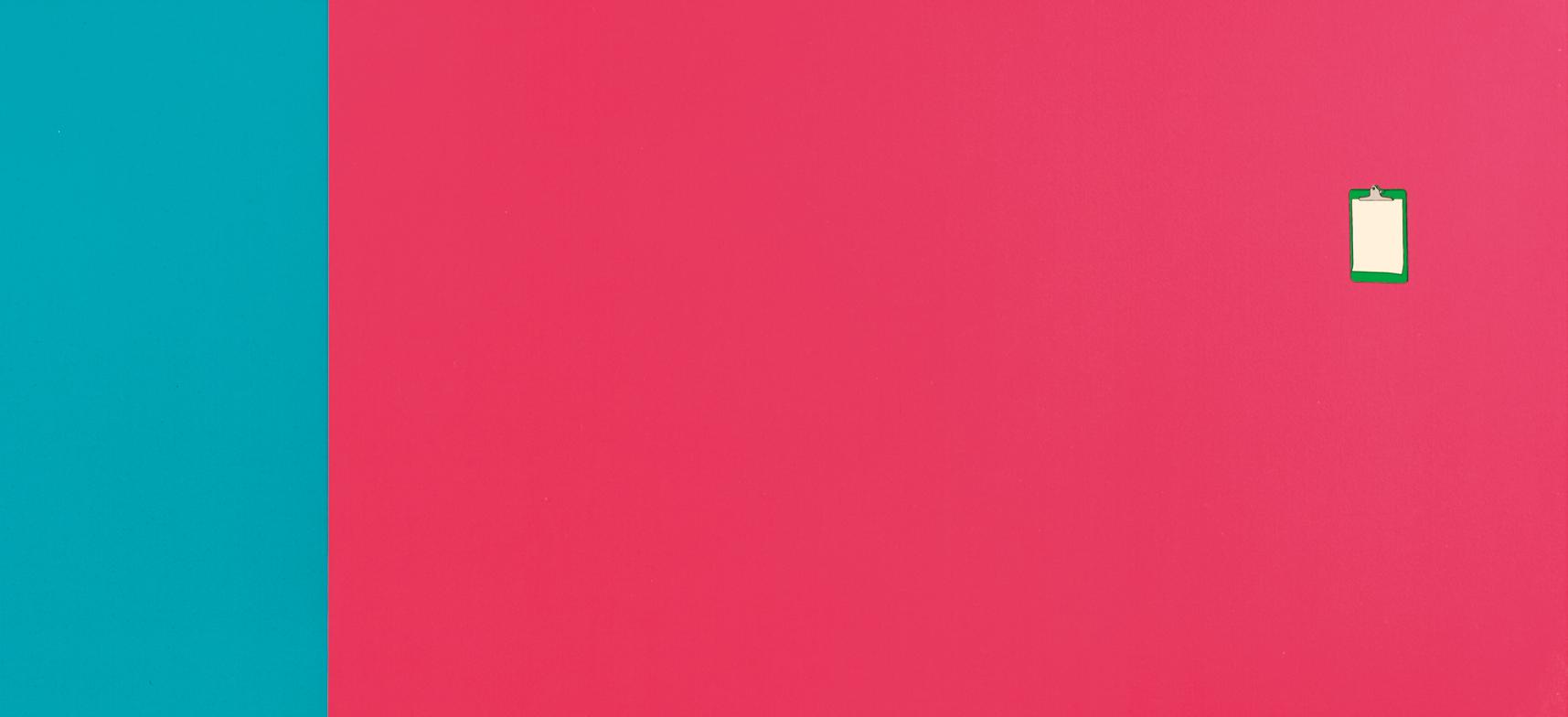
Carlos Cruz-Diez was a Venezuelan artist who is considered one of the greatest artistic innovators of the 20th century. Cruz-Diez harboured a sevendecade obsession that the common understanding of colour was wrong. Colour, the Venezuelan-born artist believed, evolves continuously in time and space.
I want people to realise that colour is not a certainty, but a circumstance, he said in 2014. Red is maybe red. It’s not the same if you hold an object under the sun as when you hold it in the shade.
He sought to demonstrate this through artworks ranging from paintings and sculpture to light installations and architectural interventions, all characterised by their geometric abstraction and a vivid repetitive palette. In 1974, Cruz-Diez painted red, orange, green and black stripes across the walls and floor of the main terminal at Simón Bolívar International Airport in Caracas, a pattern he returned to in 2014 for a commission to decorate a boat, the Dazzle Ship, in the manner of camouflage in Liverpool’s dockyard as part of the city’s biennial. His experiments made him
one of the leading figures in Op Art, the 1960s school interested in optical illusion and kinetic art, which, around the same time, introduced movement, suggested or actual, into art.
For his Chromosaturation series, started in 1965, the artist would take over three successive galleries, bathing one in red light, a second in green, the third in blue. The intensity of the fluorescent bulbs changed the appearance of anything brought into these environments. As a visitor moved through the exhibition, the light of the previous chamber remained on the retina, further affecting perception. This was a natural progression from the Physichromie series that Cruz-Diez had started six years earlier. Here, the artist attached strips of wood painted in alternative colours at right-angles to the surface of a support. The dominant palette of wall-based work changed depending on the position of the viewer. Traditional painting, the artist wrote, merely represents a memory, whereas he hoped that with his work what you see… is in the present
Oliver Basciano, Obituary, The Guardian , 2019
12 Couleur Additive 3, 1972 screenprint, 74 x 74 cm edition 150/200
editioned lower left, signed lower right
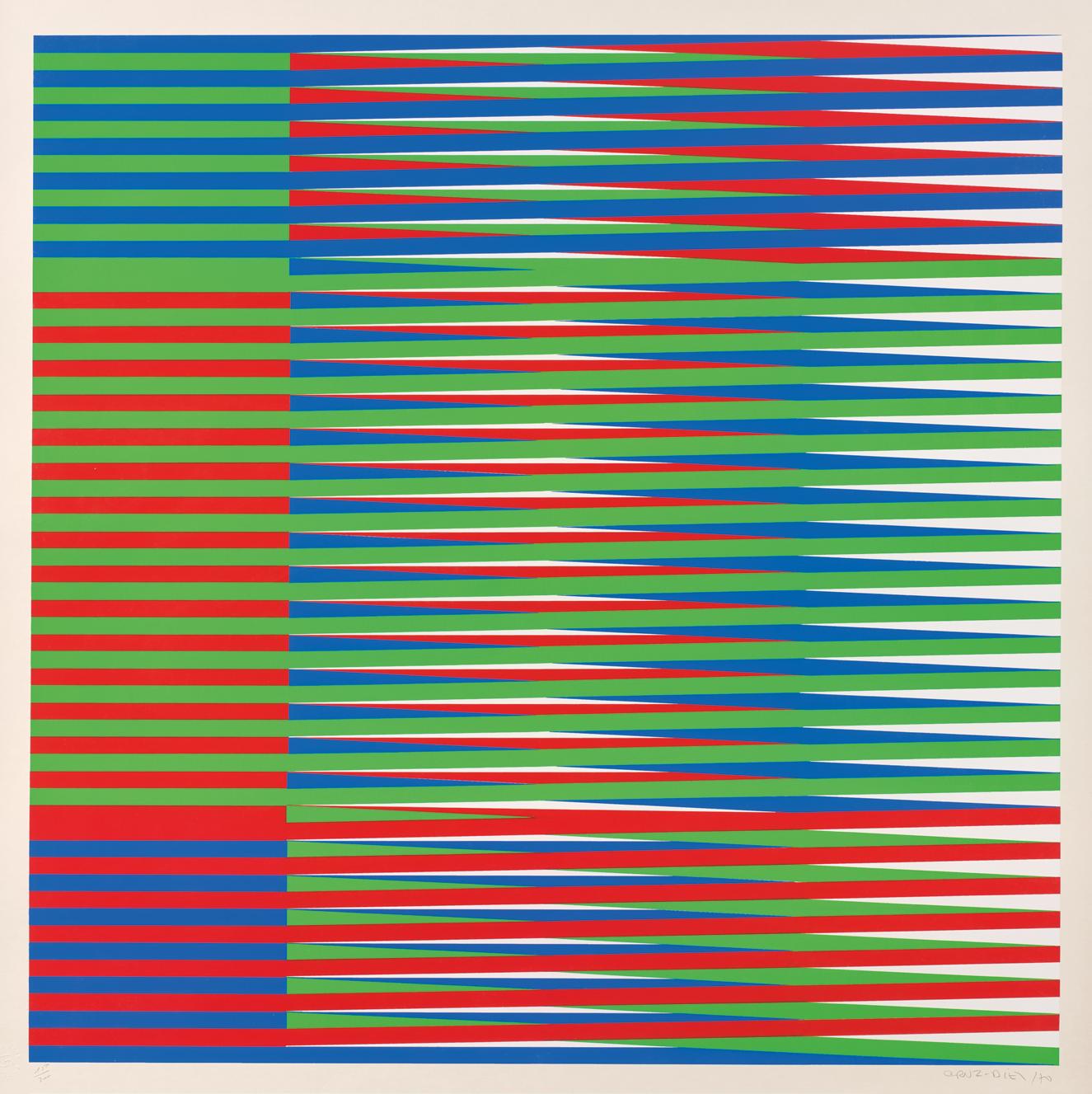
Sonia Delaunay, a French artist born to Jewish parents, is renowned for her vibrant use of colourful geometric patterns. For me, there is no gap between my painting and my so-called ‘decorative’ work , she once remarked.
Born Sarah Élievna Stern on November 14, 1885, in Odessa, now Ukraine, to a lower-class Jewish family, she was sent to live with her wealthy uncle Henri Terk at the age of five. She studied drawing at the Karlsruhe Academy of Fine Arts in Germany before moving to Paris in 1906. In Paris, she married art dealer Wilhelm Uhde, a short-lived union that enabled her to become a French citizen. During her early years in Paris, her painting style evolved, embracing the vivid colours of Fauvism. It was through Uhde that she met her future husband,
Robert Delaunay. After leaving Uhde for Delaunay, the couple pioneered a fusion of Cubism and Neo-Impressionism, a style later named Orphism by poet Guillaume Apollinaire. Throughout her career, Delaunay applied this new aesthetic to her paintings, textiles, and designs.
In 1964, Delaunay made history as the first living female artist to have a retrospective at the Louvre Museum, and in 1975, she was honoured as an officer of the French Legion of Honor. Today, her works are held in the collections of major institutions such as The Museum of Modern Art in New York, the Carnegie Museum of Art in Pittsburgh, and the Hermitage Museum in St. Petersburg, among others.
13 Thunderbird, 1973 screenprint, 76 x 55.5 cm edition HCXII/XXV editioned lower left, signed lower right

Robyn Denny was among a group of young artists who transformed the direction of British art in the late 1950s, propelling it into the international spotlight. The group rejected the dominance of St Ives School of landscape-based painting, drawing inspiration instead from Abstract Expressionism, American cinema, popular culture, and urban modernity, creating a new visual language to comment on the world in which they lived.
Born in Abinger, Surrey, Denny was educated in Dorset. After completing his national service in the Royal Navy, he studied at St Martin’s School of Art, London in the early 1950s and then at the Royal College of Art. Upon graduating from the Royal College in 1957, he was awarded a scholarship to study in Italy. He had teaching posts at at Hammersmith School of Art, the Slade School of Art, and the Bath Academy of Art, Corsham. During his time at the Royal College, Denny created early works featuring rudimentary head images influenced by French Tachisme, characterised by dripped and dribbled paint. These were
accompanied by abstract collages and large gestural paintings that reflected the bold gestures and marks of American Abstract Expressionism, which were exhibited in London in 1956 and 1959.
In 1969, Denny curated an Arts Council exhibition on American artist Charles Biederman, who had spent over 20 years creating vividly coloured abstract reliefs. This experience heralded a shift in Denny’s work, as he moved from rich, dark colour harmonies to brighter, more vivid hues. In 1981, Denny relocated to Los Angeles for five years. His time in California marked another radical transformation in his art.
At his best, Denny can be seen as one of the most original abstract painters of the later 20th century. Independent, inquisitive, and deeply connected to urban life, Denny drew inspiration from urban culture, which became the bedrock of his work. His titles, which can be seen as random, were sourced from news reports, TV shows, and his eclectic reading. In addition to his paintings, Denny produced numerous editioned prints and explored new mediums with his striking Colour Box series.
14 Suite 66, 1966 screenprint, 75.5 x 49.5 cm edition 28/75
signed, dated and editioned lower right


15 Graffiti Fragment (from the suite of 25 images) Yellow, 1977 etching, 75.5 x 49 cm
Artist’s Proof, edition 1/2 editioned lower left, titled lower centre, signed and dated lower right

16 Graffiti Fragment (from the suite of 25 images) Red, 1977 etching, 75.5 x 49 cm Artist’s Proof, edition 1/2 editioned lower left, titled lower centre, signed and dated lower right
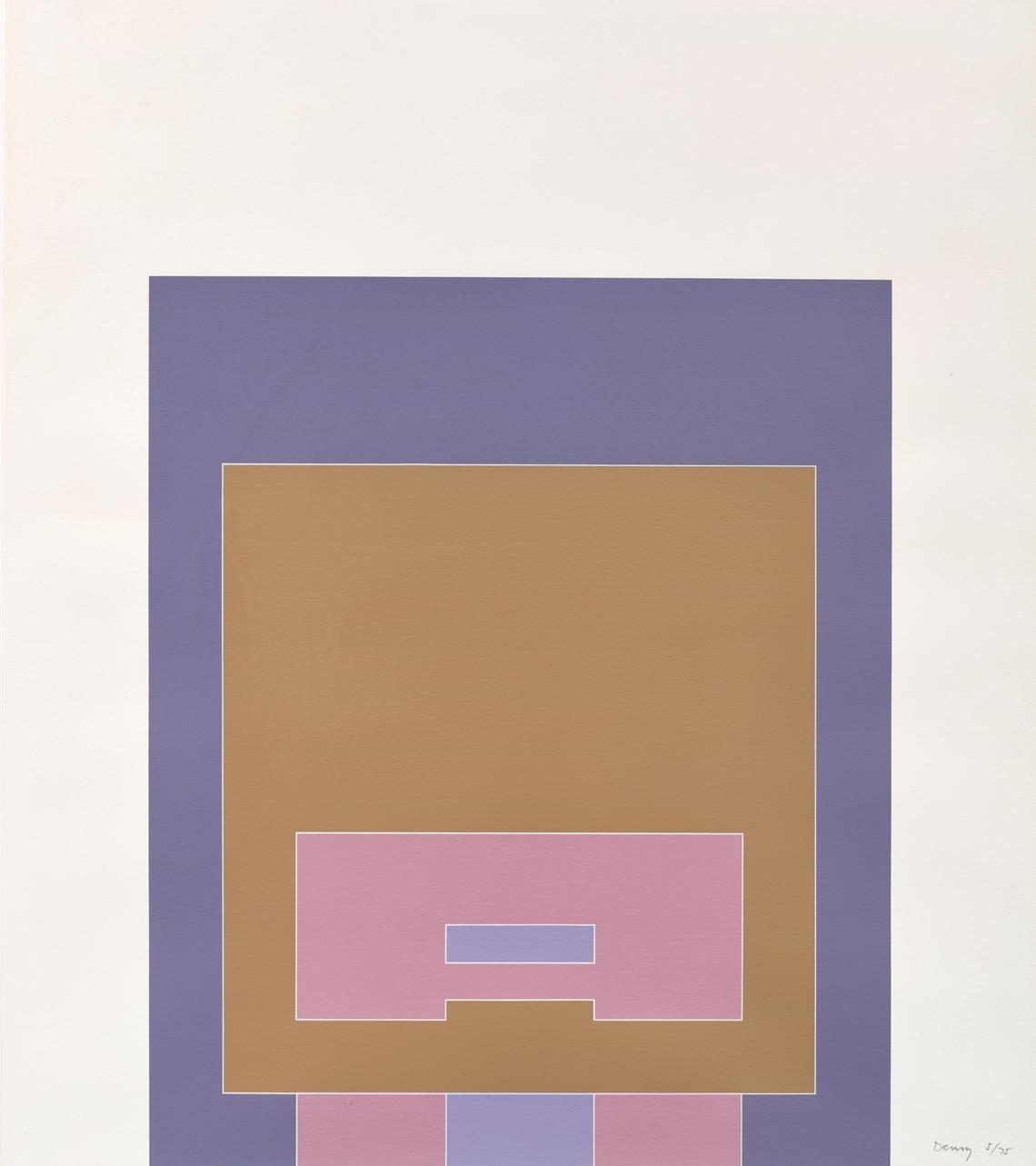
17 Untitled I (from the Waddington Suite No.1 - ‘A Series of 5 Screenprints’), 1968 screenprint, 61 x 53 cm edition 5/75 signed and editioned lower right
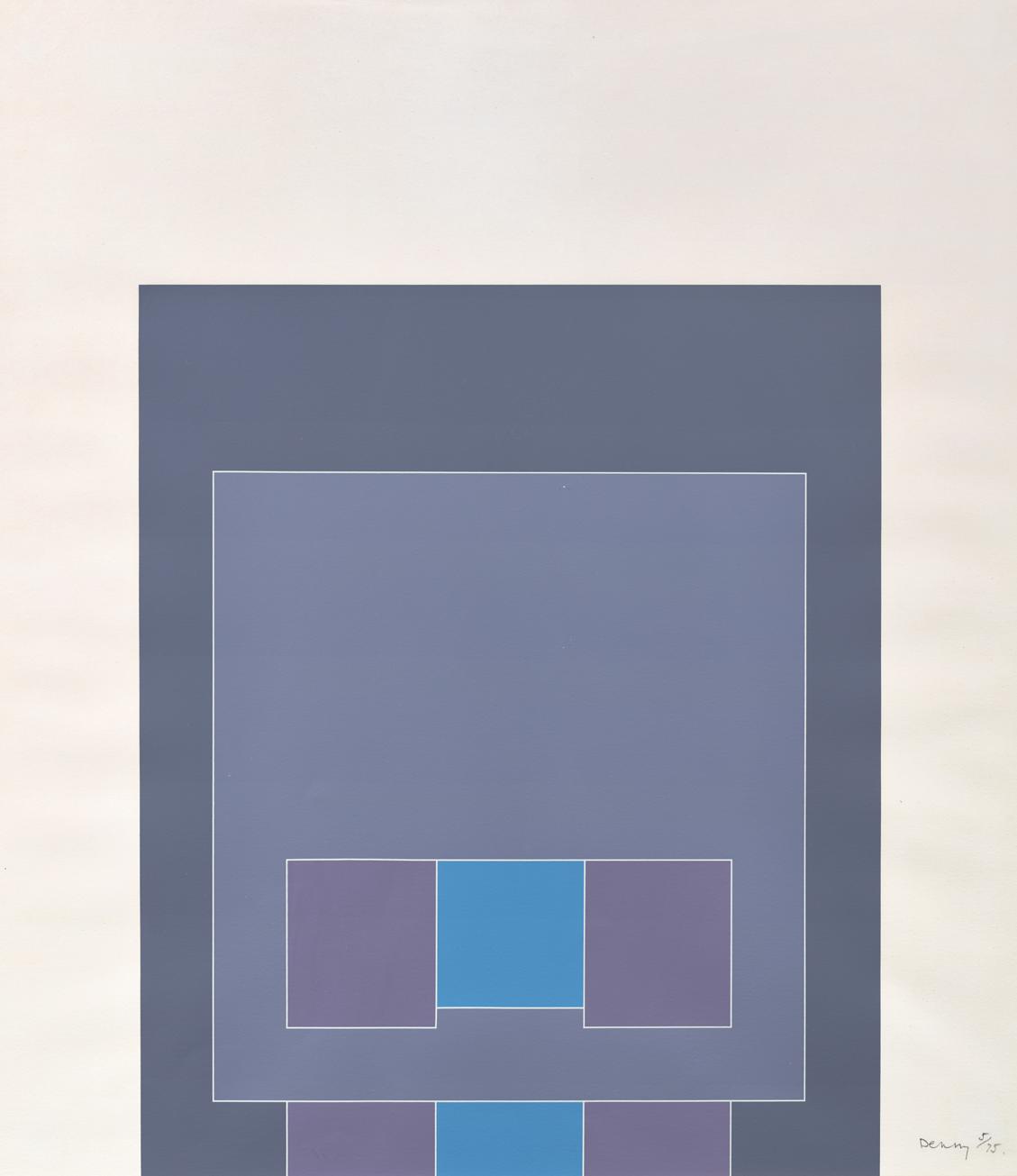
18 Untitled IV (from the Waddington Suite No.1 - ‘A Series of 5 Screenprints’), 1968 screenprint, 61 x 53 cm edition 5/75 signed and editioned lower right
19 Colour Box III, 1973
screenprint, perspex and hardboard, 60 x 50 cm
edition 39/75
signed and titled verso

Barbara Freeman is an artist known for her work as a painter, printmaker, sculptor, installation artist, and educator. Born in London, she pursued her artistic education at St Martin’s, Camberwell, and Hammersmith Colleges of Art, earning her diploma in 1962. She later completed a postgraduate diploma at the University of Leeds in 1972.She has taught part-time in several colleges.
Though initially focused on sculpture, Freeman transitioned to painting and printmaking in 1982, incorporating mixed media into her practice. Her extensive travels have deeply influenced her work, which spans both figurative and abstract styles. Her art is characterized by a rich, vibrant palette. Freeman has exhibited extensively across the UK, Europe and USA.
20 Untitled perspex and resin, 63 x 68 cm
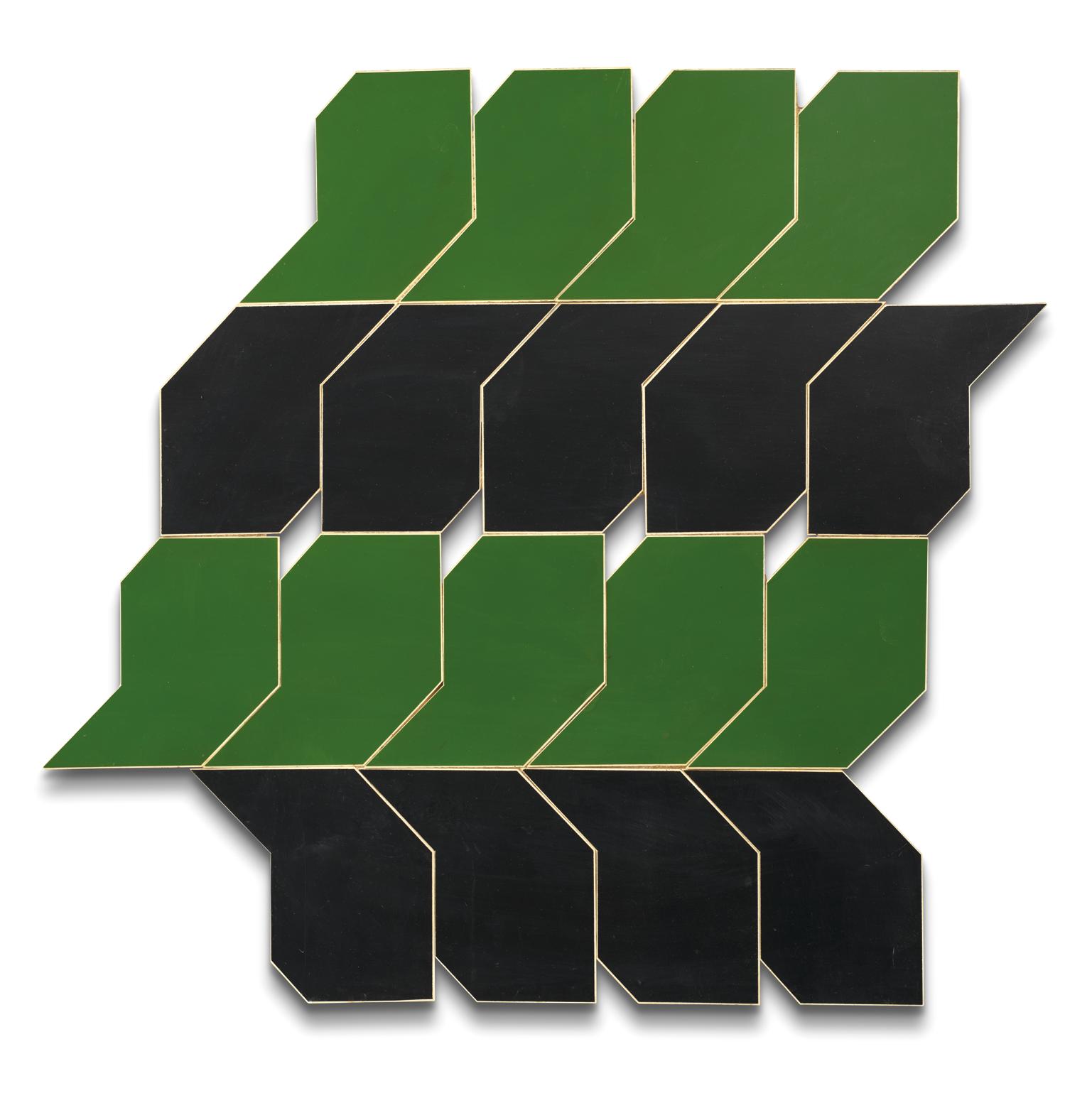
Gordon House, born on June 22, 1932, in Pontardawe, South Wales, developed an early passion for art. At the age of fourteen he secured a grant to attend art school. From 1947 to 1950, he studied at Luton School of Art in Bedfordshire and St. Albans School of Art in Hertfordshire.
In the early 1950s, House spent time at an advertising studio, where he honed his burgeoning skills in typography and graphic design. In 1952, he accepted a position as a designer for the Plastics Division of Imperial Chemical Industries, where he worked until 1959. Following this, he spent two years as a graphic designer at the Kynoch Press in London.
From the late 1950s onward, House began producing large-scale abstract works. However, it was in the 1960s that his reputation began to grow. In 1960, he took part in the Situation: An Exhibition of British Abstract Painting at RBA Galleries and by 1961 he was working as a self-
employed designer and typographer. He had become established among a new generation of artists as an independently minded and adventurous painter and designer. Initially, he supplemented his freelance work by teaching part-time at art schools in and around London. However, by 1964, he was able to fully dedicate himself to his practice. He worked for The Beatles, designing their White album and the back of the Sergeant Pepper album, for which his longtime friend Peter Blake designed the front. Later, he designed Wings’ first album cover.
His paintings and prints were exhibited internationally and are held in public collections including the Victoria and Albert Museum, British Council, Tate Gallery, Museum of Modern Art in New York, Indianapolis Museum of Art, Harvard Art Museum and the National Gallery of Australia in Canberra.
21 62 R Emerald Green (from the series ‘Clear, Coloured and Neutrals’), 1968 screened vacuum formed rigid vinyl sheet, 50 x 50 cm edition 33/70 signed and editioned lower centre
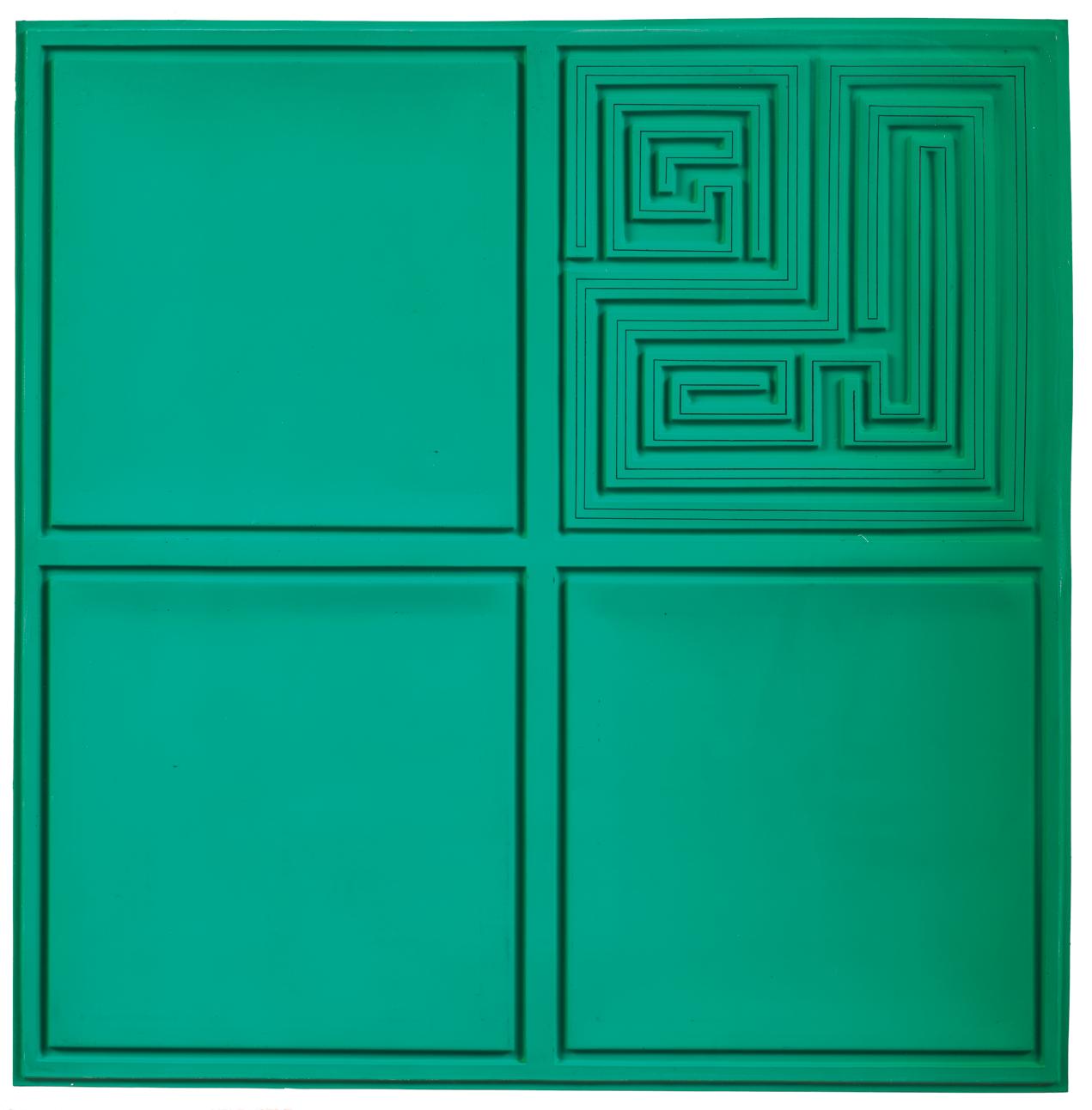
Dublin-born printmaker Tim Mara pursued his artistic education at Wolverhampton Art College and the Royal College of Art, London, where he later became Professor of Printmaking and Head of the School of Fine Art. Renowned for his exceptional technical skill, Mara exhibited in over 80 group shows across the UK and more than 50 international exhibitions, including a solo show at the Irish Museum of Modern Art (IMMA) in 2000. His work is featured in public collections worldwide.
While Mara’s work is often associated with the Pop Art movements of the 1960s and 70s, he saw his creations as a modern take on the old masters, drawing significant influence from artists like Velázquez and Vermeer. He adopted characteristics of the Dutch Masters, such as their mastery of light, clarity, and stillness, while also exploring themes like repeating patterns, reflection, refraction, and shadow. Mara’s approach involved
depicting familiar objects in familiar ways without iconising them. His prints often juxtapose everyday objects, emphasizing this perspective while also delving into contemporary issues such as the miners’ strike, morphic resonance, symbolism, and identity.
As an artist, Tim Mara was distinctive in his near-exclusive focus on printmaking. He had a particular interest in photographic screen printing, a meticulous, labour-intensive process that could take up to three months to produce a single print. Mara also experimented innovatively with intaglio techniques. In the early 1990s, while at the Royal College of Art, he began to develop a method of colour separation photolithography. Between 1993 and 1997, he produced several prints that were either purely lithographic or combined lithography with silkscreen printing, showcasing his commitment to pushing the boundaries of printmaking.
22 The Black Room, 1987 screenprint, 30 x 30 cm edition 39/48 titled, editioned, signed and labelled lower right

Patrick Procktor RA was a painter and printmaker born in Dublin in 1936, raised in London. He attended Highgate School, where he was taught by the renowned landscape painter Kyffin Williams. At 18, Procktor was conscripted into the Royal Navy, where, during his National Service, he learned to speak Russian. While working as a Russian interpreter with the British Council, Procktor began to paint and draw in his spare time and was accepted by the Slade School of Fine Art in 1958.
Procktor held his first one-man show at The Redfern Gallery in London’s Cork Street in 1963—a sellout solo exhibition that helped confirm his reputation among a wider artistic circle including the theatre and music. A year later, Procktor was featured in Bryan Robertson’s New Generation exhibition at the Whitechapel Gallery which featured the most promising artists of the time, including Patrick Caulfield, David
Hockney, and Bridget Riley, that heralded a new, colourful era for British art.
Procktor was a keen and highly competent watercolourist and travelpainter. His work was varied in subject— including landscapes, townscapes, figure compositions, portraits, and interiors—and was frequently based on his extensive travels. He often worked in watercolour, and his style is distinguished by limpid colouring. He was also adept at printmaking, favouring aquatint. He produced a sequence to illustrate a new 1976 edition of Coleridge’s The Rime of the Ancient Mariner, and his own publications include A Chinese Journey (1980), illustrated with aquatint landscapes.
He died on August 29, 2003, in London. Today, the artist’s works are held in the collections of the Fitzwilliam Museum in Cambridge and the Royal Academy of Arts in London.
23 Campanula, 1989 aquatint print, 53 x 68 cm edition 60/75
editioned lower left, signed lower right
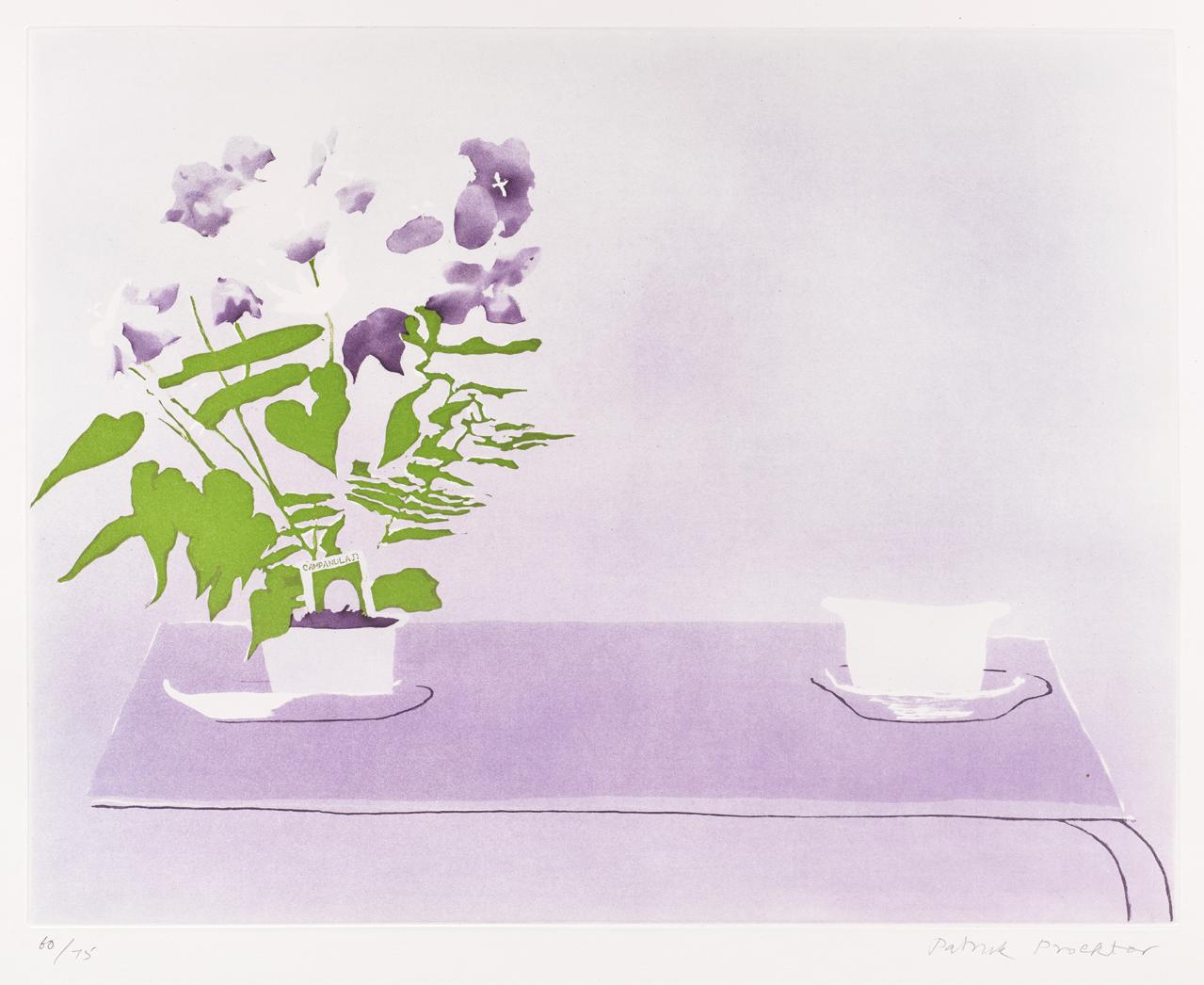
Frank Philip Stella was an American painter, sculptor, and printmaker, noted for his work in the areas of minimalism and post-painterly abstraction. For much of his career, he lived and worked in New York City before relocating his studio to Rock Tavern, New York. Stella played a pivotal role in catalyzing the minimalist movement in the late 1950s.
He moved to New York City during this period, where he created works which emphasized the picture-as-object. These were influenced by the abstract expressionist work of artists like Franz Kline and Jackson Pollock. Stella
developed a reductionist approach to his art, saying he wanted to demonstrate that for him, every painting is a flat surface with paint on it—nothing more , and rejected the notion of art as a means of emotional expression.
Stella garnered significant attention in the New York art world in 1959 with his series of four black pinstripe paintings exhibited at the Museum of Modern Art. Stella was a recipient of the National Medal of Arts in 2009 and the Lifetime Achievement Award in Contemporary Sculpture by the International Sculpture Centre in 2011.
24 Purple Series Hollis Frampton, 1972 lithograph, 44 x 59 cm edition 45/100 signed and editioned lower right
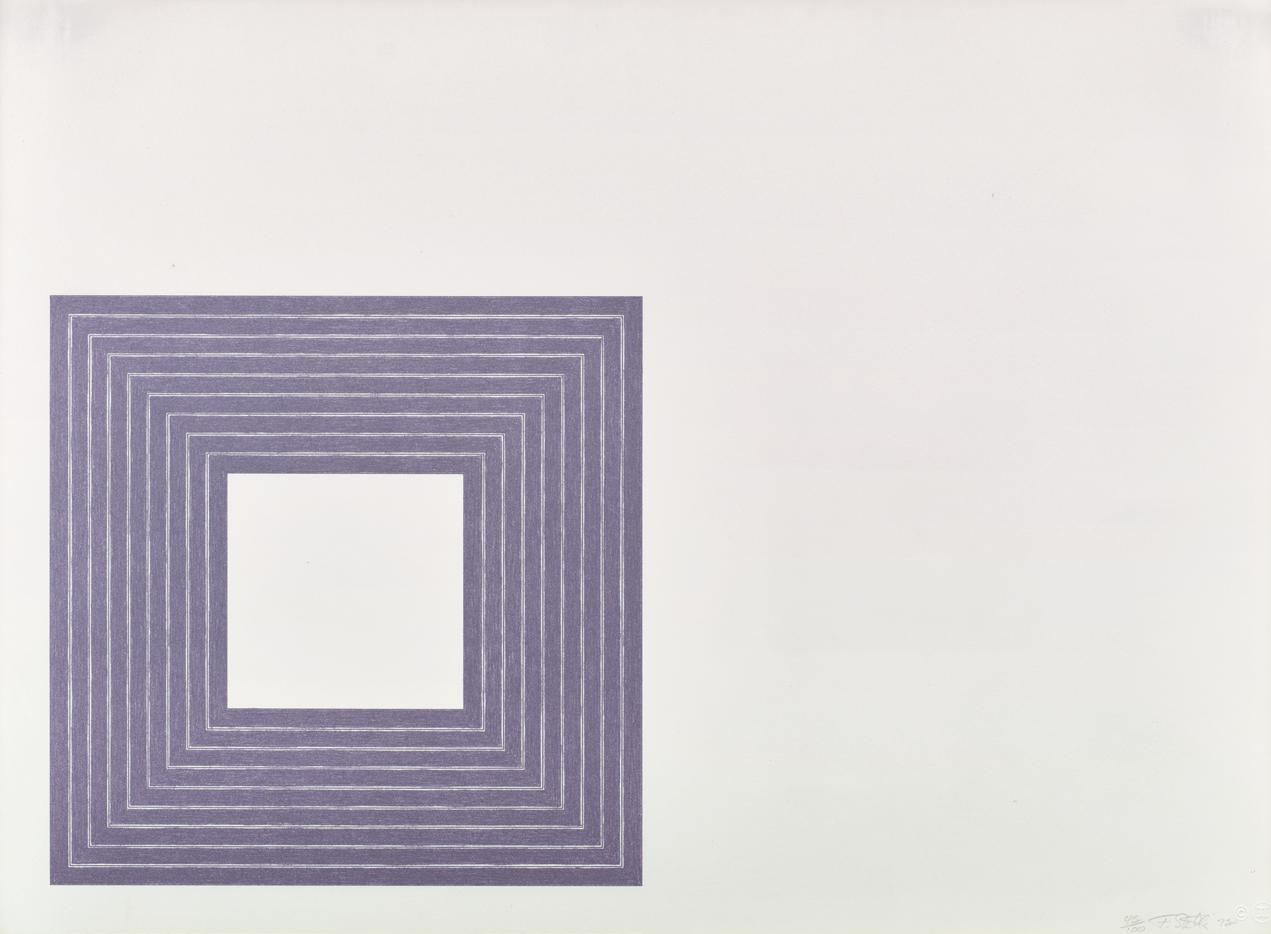
Born in Lewisham, London, Joe Tilson RA was one of the great figures in post-war British art and a pivotal artist of the British Pop Art movement during the 1960s. His early years were spent working as a carpenter and joiner before serving in the RAF until 1949. He then studied at St Martin’s School of Art and the Royal College of Art, where he was classmates with Leon Kossoff, Frank Auerbach, and Peter Blake. After winning the Rome Prize, he spent two years in Italy and returned to London in 1957.
Tilson taught at St Martin’s School of Art from 1958 to 1963 and later taught at several other institutions, including the Slade School of Fine Art, University College London, and the School of Visual Arts in New York.
Tilson’s first one-man shows were held at the Marlborough Gallery, London in 1962
and at the Walker Art Gallery, Liverpool in 1963. His work gained international recognition at the Venice Biennale and led to a retrospective at the Boijmans van Beuningen Museum in Rotterdam in 1964. He had further retrospectives at the Vancouver Art Gallery in 1979 and the Arnolfini Gallery in Bristol in 1984. A major retrospective, Joe Tilson: Pop to Present, was held at the Royal Academy of Arts in London, 2002.
Tilson received numerous awards, including the Gulbenkian Foundation Prize in 1960 and the Grand Prix d’Honneur at the Biennale of Ljubljana in 1996. That year, he also painted the banner for the Palio in Siena. He was elected Royal Academician in 1991 and lived and worked in London and Cortona, Tuscany. His work is represented in public and private collections worldwide.
25 Q - Questions (from Fragments of an Oneiric Alphabet), 1969-70 screenprint, 73 x 49 cm Artist’s Proof editioned upper left, signed upper right
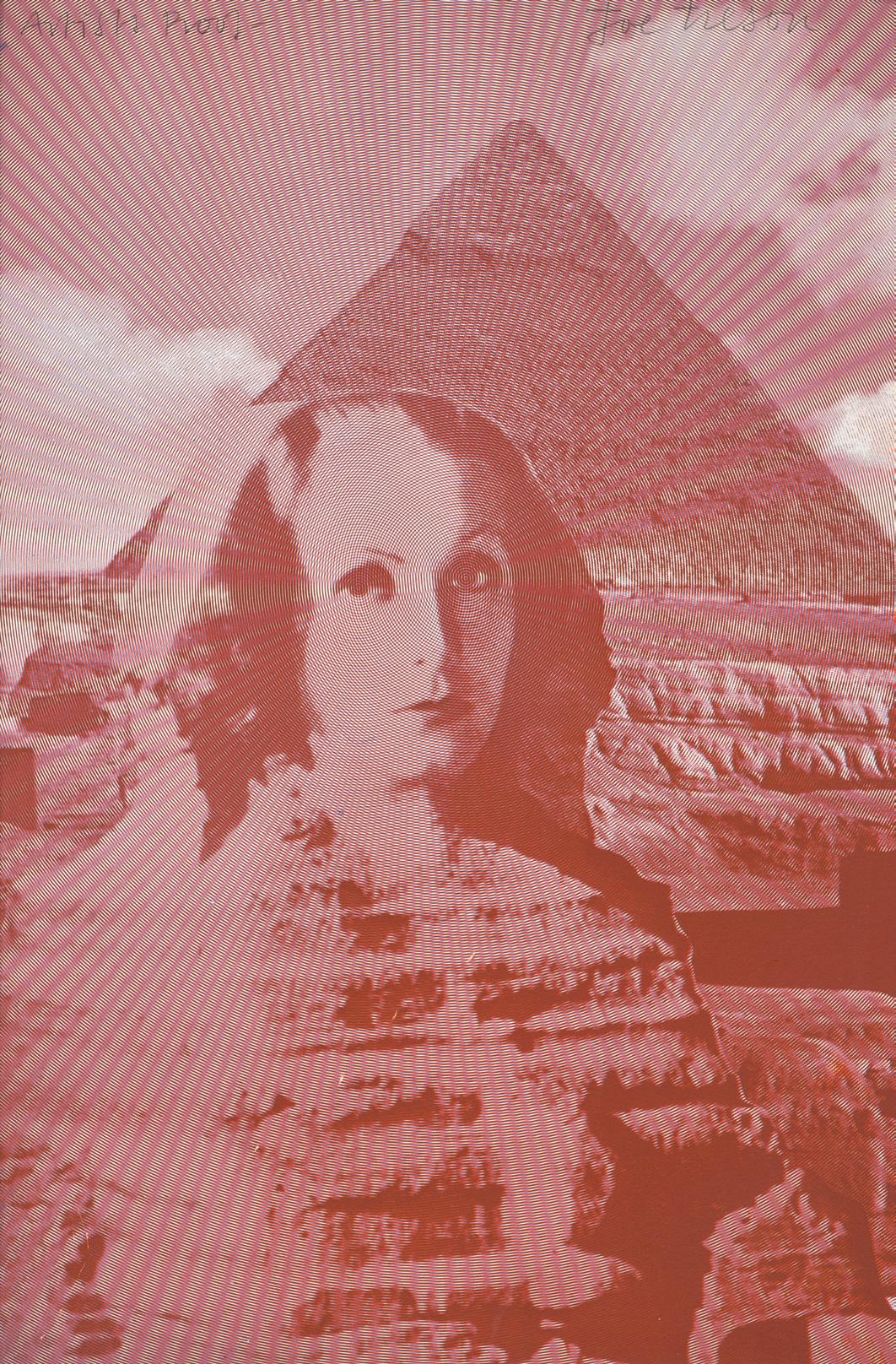
26 E - Erotic Earth Eyes (from Fragments of an Oneiric Alphabet), 1969 screenprint, 74 x 49.5 cm edition 20/25 signed, dated, titled and editioned lower right
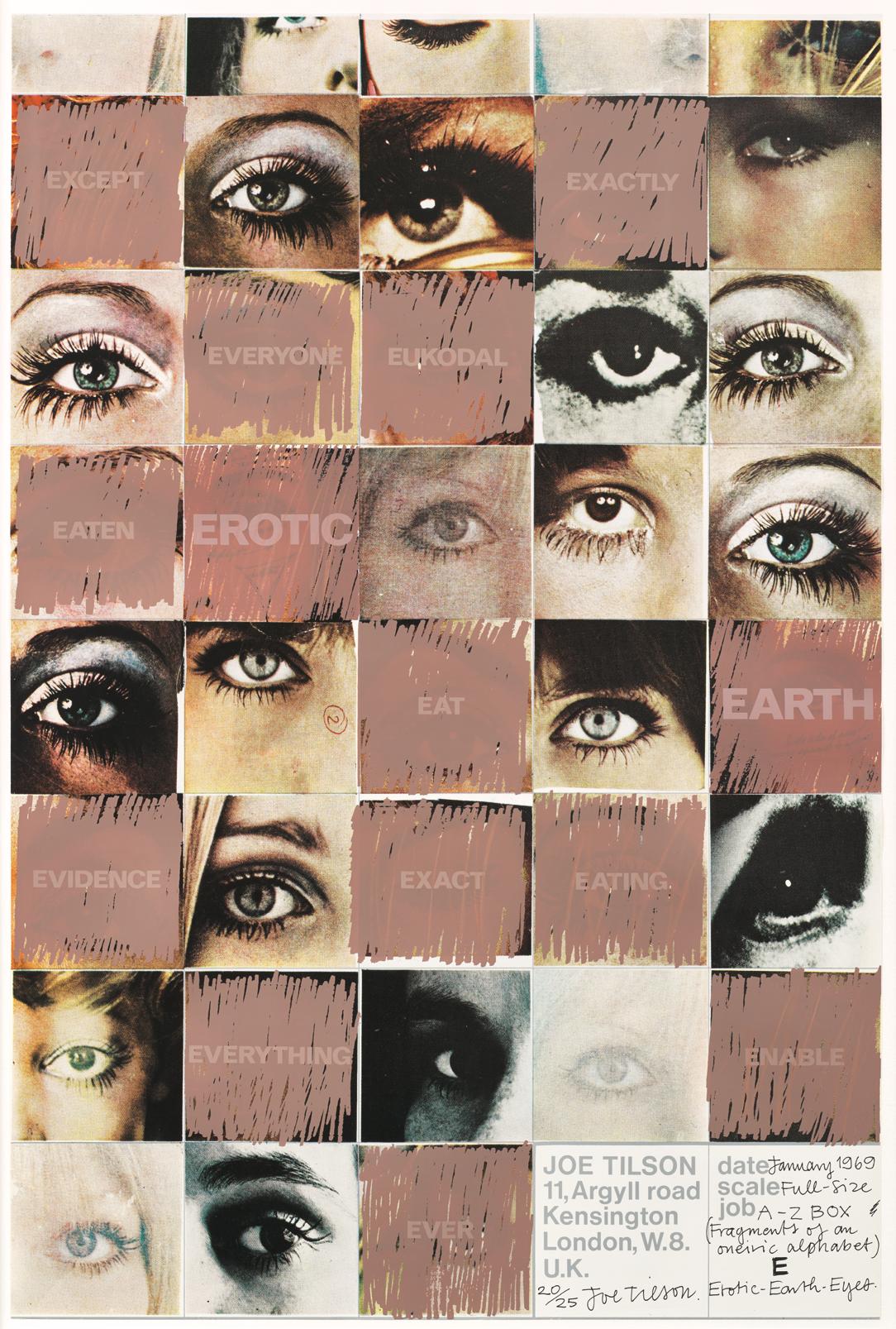
Victor Vasarely was a French-Hungarian artist credited as the grandfather and leader of the Op Art movement. Born Győző Vásárhelyi on April 9, 1906, in Pécs, Hungary, Vasarely initially pursued a medical career before dedicating himself to learning academic painting. In the late 1920s, he enrolled at the Muhely Academy in Budapest, where the curriculum was largely based on Walter Gropius’s Bauhaus school in Germany. Vasarely’s method of painting drew from a range of influences, including Bauhaus design principles, Wassily Kandinsky, and Constructivism.
In 1930, Vasarely settled in Paris and worked in advertising to support himself as a graphic artist. During this time, he
produced Zebra (1937), a work often cited as one of the earliest examples of Op Art.
The artist experimented with styles based in Surrealism and Abstract Expressionism during the 1940s before arriving at his hallmark checkerboard paintings. His work is chatacterised by the use of geometric shapes and colourful graphics, creating compelling illusions of spatial depth, as seen in his work Vega-Nor (1969). Op Art went on to have a number of practitioners, including Bridget Riley and Yaacov Agam. In 2019, a temporary exhibition of Vasarely’s work, titled Le Partage des Formes was displayed in the Centre Georges Pompidou in Paris. His work is held in numerous public collections worldwide.
27 Untitled II, c.1975 silkscreen print, 91 x 70 cm edition 117/250 editioned lower left, signed lower right
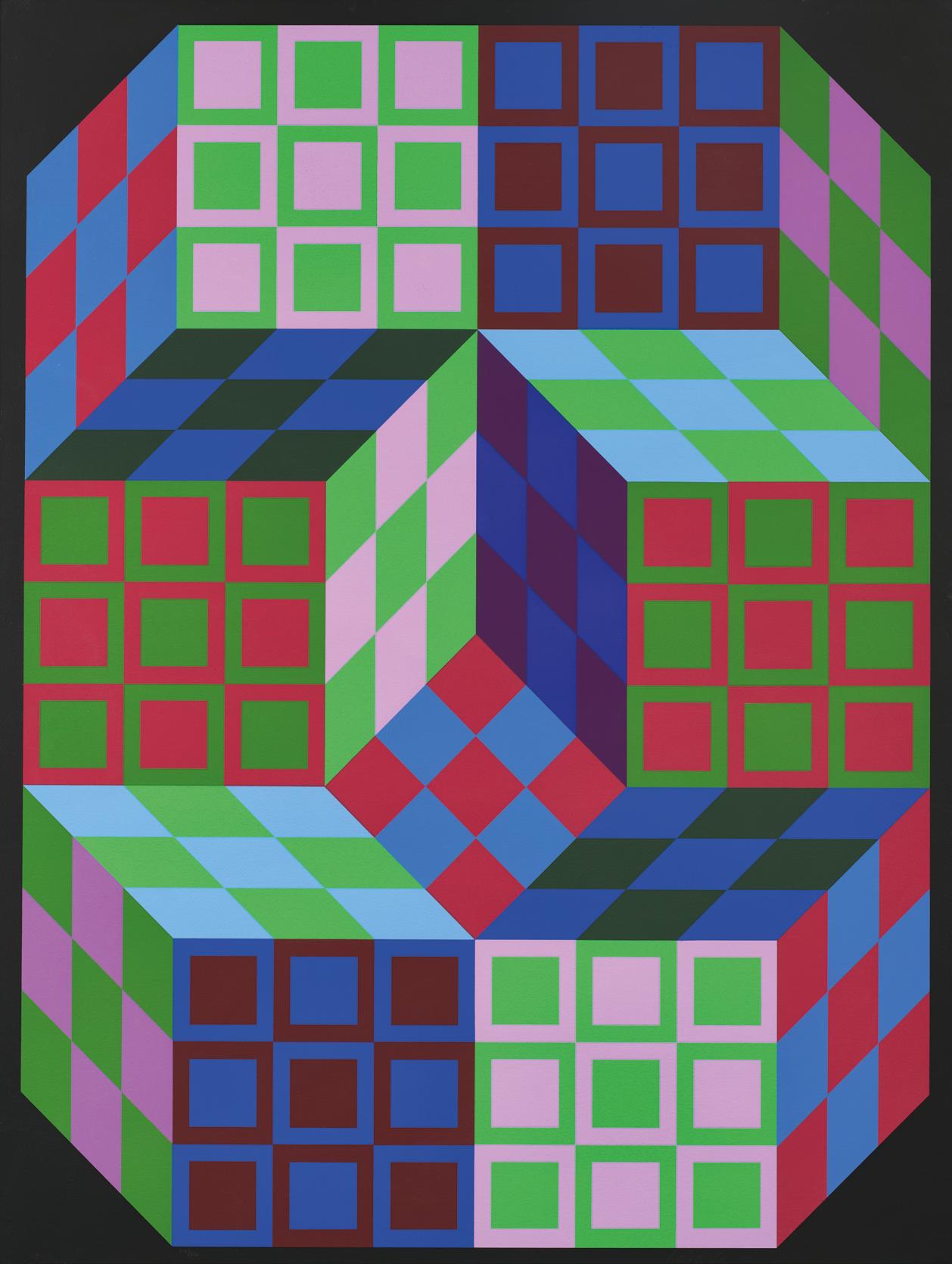
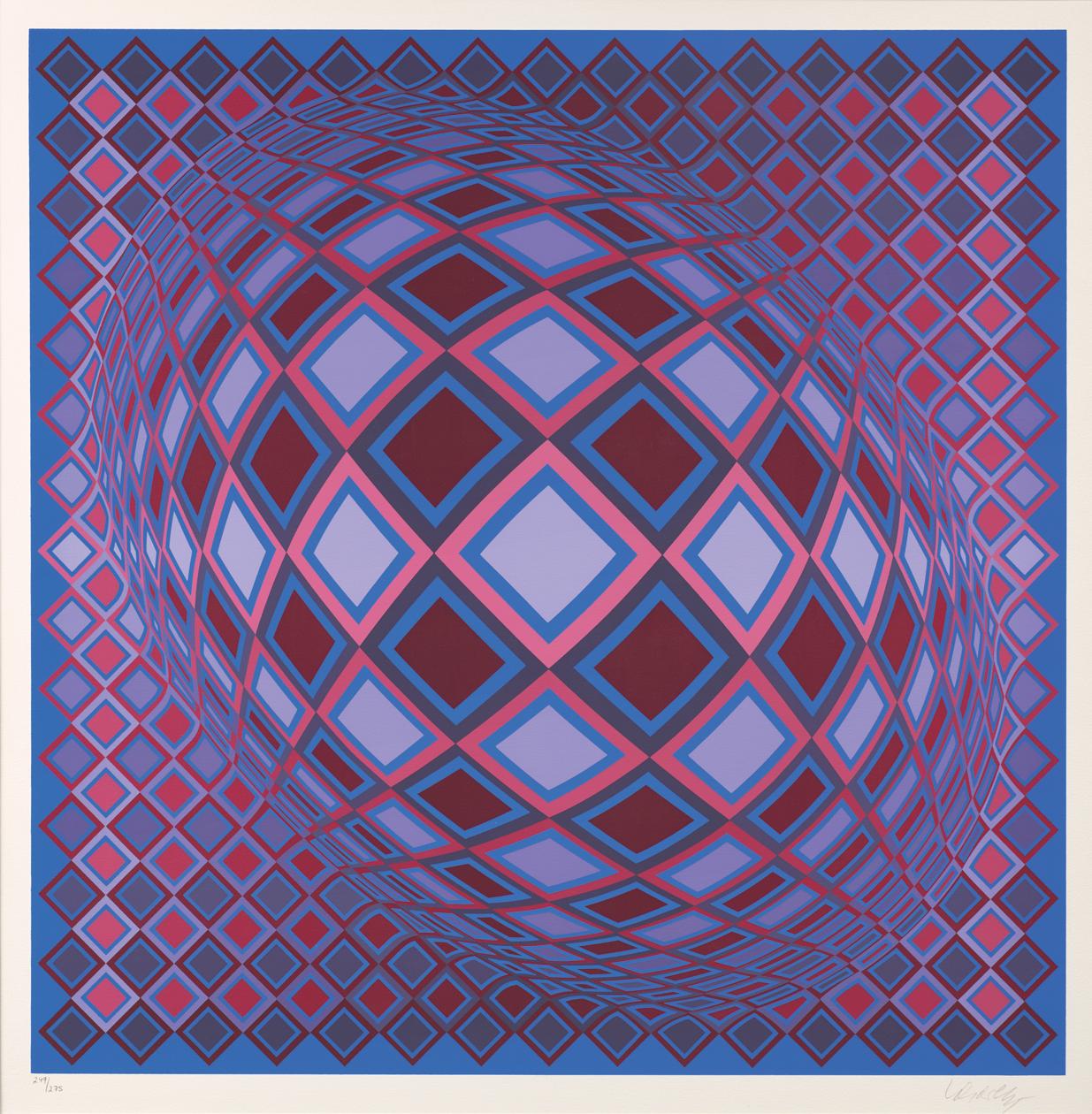
28 Louisiana III, 1983-84
silkscreen print, 71 x 71 cm
edition 249/250
editioned lower left, signed lower right


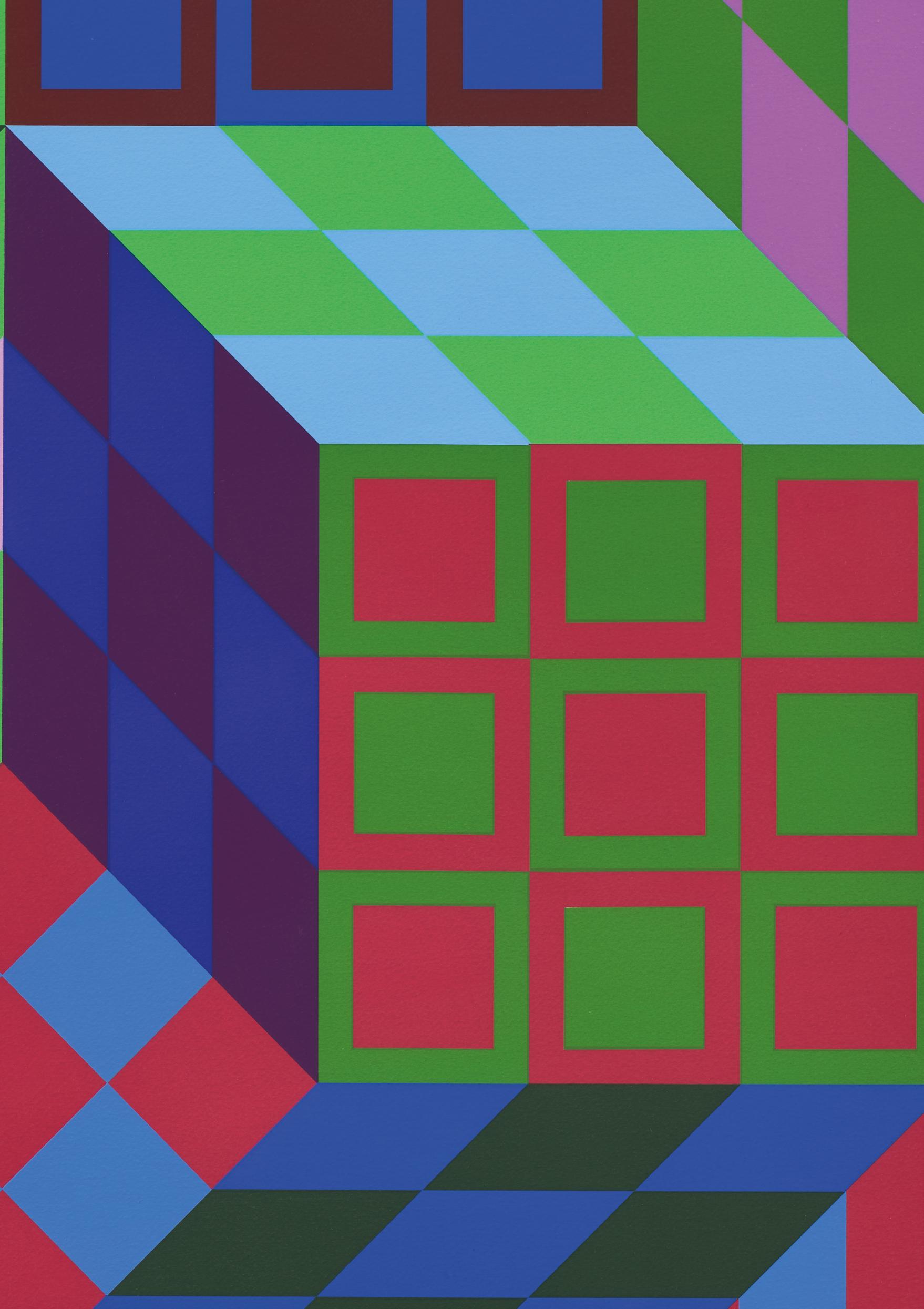
At first sight the paintings of Alistair Grant seem simple enough, broad sweeps and patches of colour laid upon a clear ground of colour, all presented flat to the surface and the eye. But appearances, as we might guess of the artist himself, gruff Scotsman that he purports to be, are often deceptive. We might easily suppose, on first sight of these new paintings, that by the flat and uniform application of the pigment across the surface, the lately retired Professor of Printmaking at the Royal College of Art was bringing to the canvas something of the simple processes of the print; or again, with his discs and the arcs and squares, that his engagement was entirely with abstract relationships and formal exercises. Not a bit of it. The Professor has always been a painter first and print-maker by adaptation and circumstance. His preoccupations here are entirely painterly, and given but a little time and sympathetic consideration, the inherent painterliness of his work quietly reveals itself. The simplicity is not so simple after all.
There is a very real sense in which all abstract painting is a kind of landscape painting. Even a single mark laid upon the plane of the canvas establishes a relationship that is more than immediate and direct, setting up spatial ambiguities and possibilities,

now shallow, now deep, that the visual imagination is quite free to explore at its own discretion. No overt or obvious reference need be made to the external and visible world, but the sympathy and resonant suggestion remain, charged and active, in the landscape of the imagination.
There are, of course, no fixed positions for artists to take along that line between the poles of representation and abstraction. Ever since Kandinsky and Mondrian first slipped free of the obvious reference in their imagery, artists have allowed themselves the conscious but elliptical or covert
response to the direct experience of landscape. It is in this sense that Alistair Grant sees himself as very much the landscape painter and, rather more than that, the painter of the particular land, sea and beachscape of the northeastern coast of Normandy, la CÔte d’Opale.
The coast from Boulogne to Le Touquet and Étaples, the great summer resort of the fashionable English between the wars, was where he spent a considerable part of his childhood and still keeps a house. His approach is frankly hedonistic, fraught with nostalgic recollection of childhood experience yet instinct with the present and immediate visual stimulus and pleasure of the seaside. Each work is thus, in sort, a private landscape, consciously if obliquely linked to the experience or incident or particular place that stuck in his eye and mind.
It might be something so specific as a green kite sweeping and looping above the sands, a towel across a chair, the untidy, gently swaying row of beach huts beneath the beach wall, a beach ball, a lifebelt on its stand; or again it might be something so general and impalpable as a pleasant day at Le Touquet, with the tide gone out, the sun shining, and footprints in the sand: either way the intention is the same conscious
evocation and fixing upon the canvas, of the real moment of experience, at once unique and personal to the artist and yet common to us all. The pretty girls walk by: the shouts and laughter of the children hang in the clear air, to be caught, as it were, in our mind’s ear.
There is no puritanical agonising over means and ends, no sense of guilt or struggle to qualify and justify the pleasure taken in visual sensation and its indulgence. All is straight-forward, clear and simple, the pigment bright and clear, its application direct and uncomplicated. This is not to say, of course, that the practical engagement is not serious, but only that the extended processes and necessary work that the business of painting must always entail, are never promoted to be celebrated for their own sake. Certainly the surfaces are worked and reworked, shifted and adjusted to the final minute, the clarity of image and composition achieved only after long consideration, but all such activity is sublimated and transcended in the final statement. The apparent ease and simplicity of these paintings are indeed deceptive, but they are so entirely without affectation. Alistair Grant’s hedonism, too, is sincere and entirely unaffected: he might almost be a Frenchman.
William Packer
Alistair Grant, A Sense of Place
The Scottish Gallery, London, November 28 - December 21, 1990

30 Birdcage No 5, 1957
lithograph, 41 x 54 cm
edition 10/20
editioned lower left, signed and dated lower right
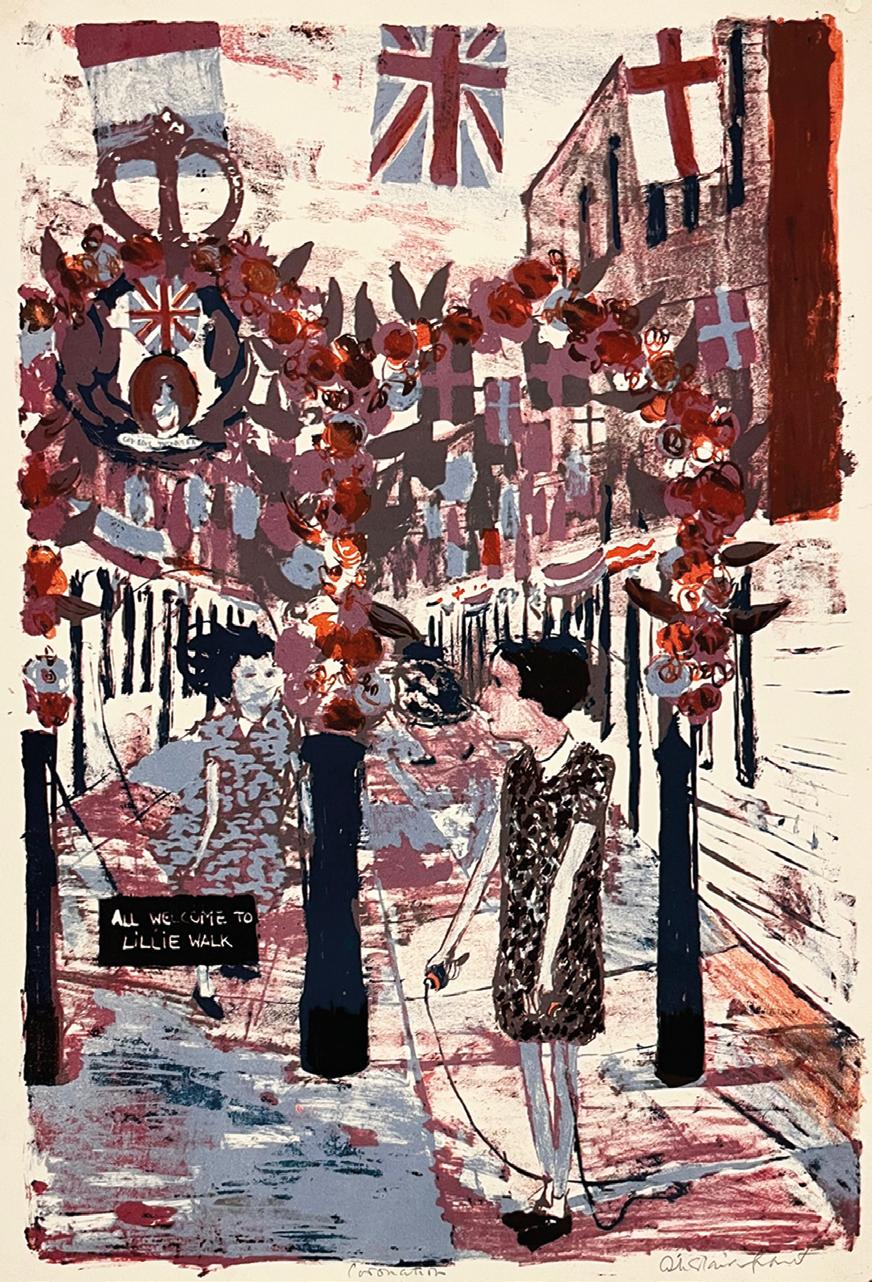
31 Coronation, 1953 lithograph, 50 x 33 cm
Artist’s Proof titled lower centre, signed lower right

32 St Omer, 1955
lithograph, 44 x 56 cm
edition 16/19
editioned lower left, signed and dated lower right
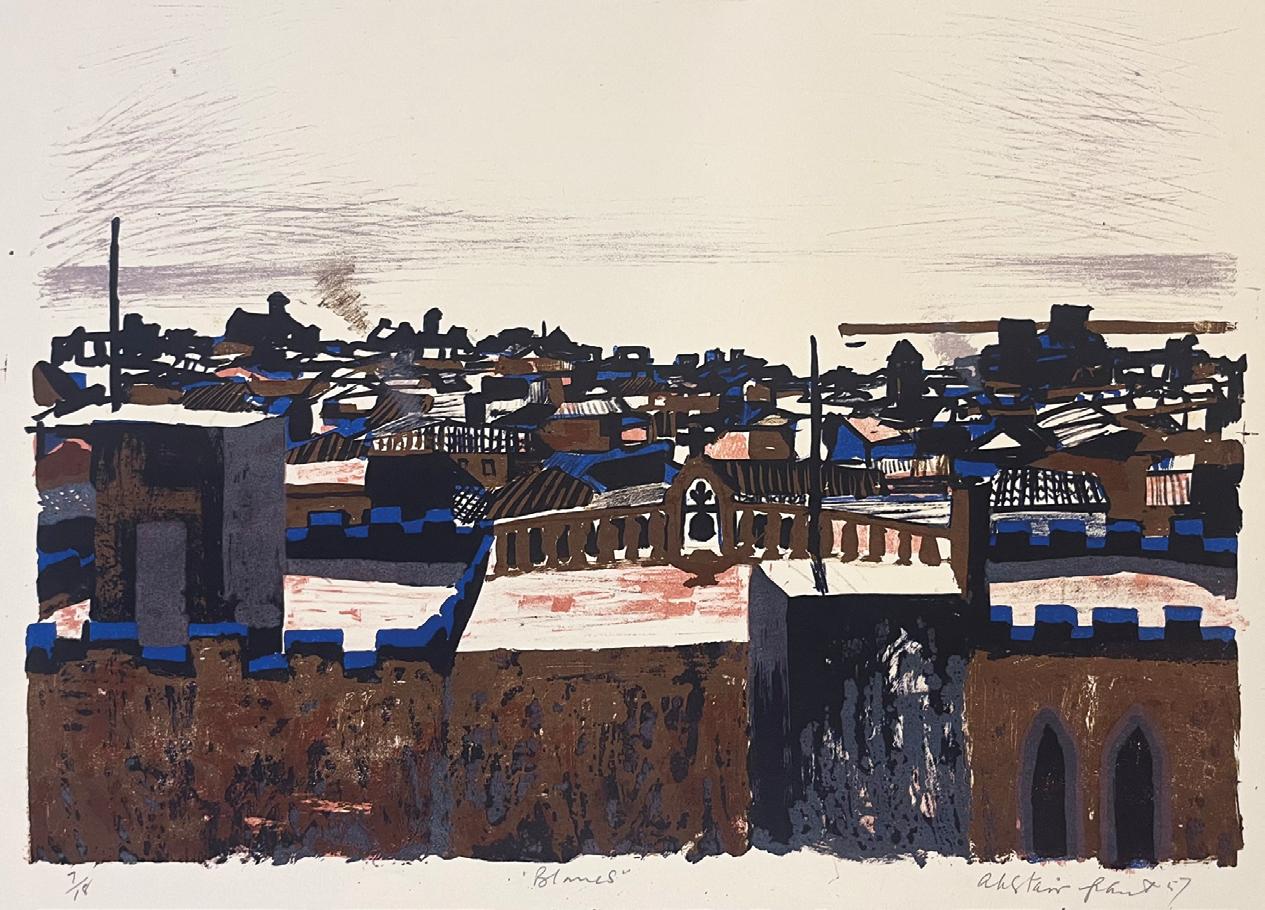
33 Blanes, 1957 lithograph, 41 x 55 cm edition 7/18 editioned lower left, titled lower centre, signed and dated lower right

34 Roundabout, Étaples, 1954
etching, 28 x 36 cm
edition 18/25
editioned lower left, signed lower right

35 The Maypole, 1954 etching, 39 x 27 cm edition 19/25
These prints dating from the period 1954-58, were either the result of life drawings or were drawn directly on to the plates in situ. Grant’s mother was French, she came from the Normandy town of Étaples, he visited this small fishing port regularly from an early age. Several of these prints show aspects of the town’s everyday life. Grant enjoyed the challenge of the drypoint, once the mark is cut into the surface of the metal it cannot be removed without damaging the important metal bun; On occasions he used left over plates and incorporated the previous markings into his own print. None of these images have previously been editioned.
Alistair Grant, Etchings and Drypoints, 1954-58
Austin/Desmond Contemporary Books
36 Le Touquet Conversation, 1958
etching, 30.5 x 40.5 cm
edition 18/25
editioned lower left, signed lower right
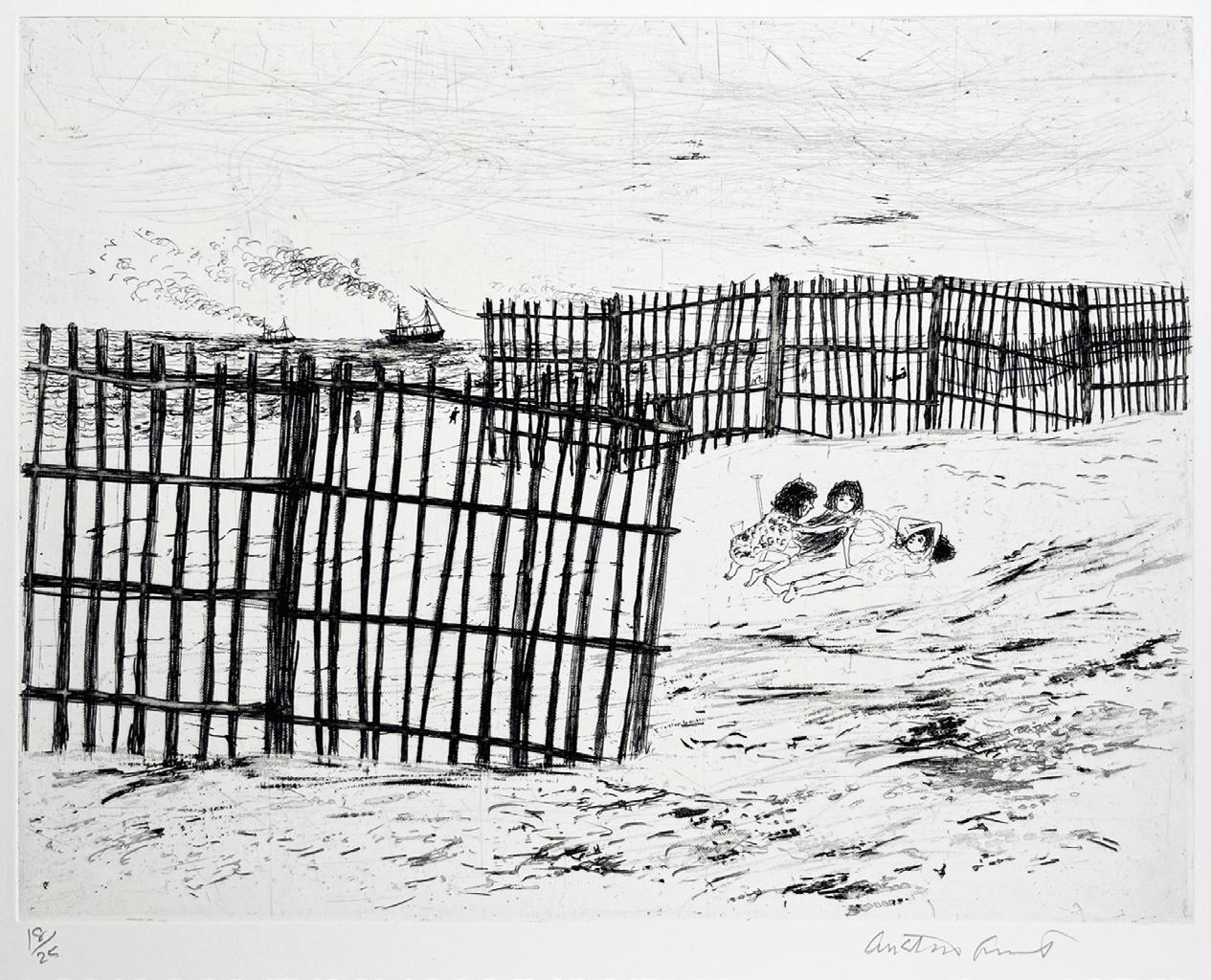
37 Green Beach Hut, c.1960
lithograph, 38 x 56 cm
edition 22/30
editioned lower left, signed lower centre, signed lower right

38

etching,
edition 7/50
editioned lower left, titled lower centre, signed lower right
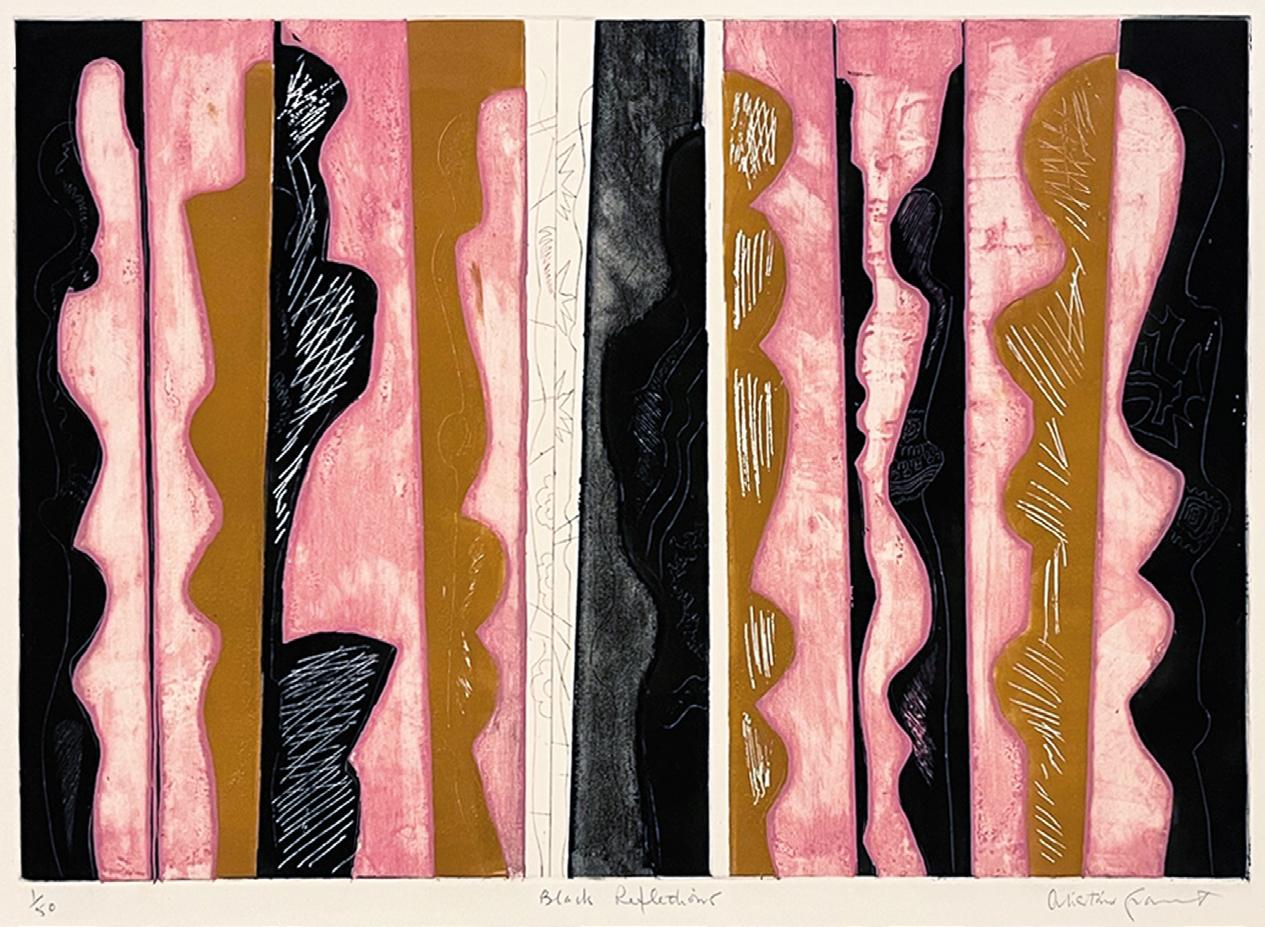
39 Black Reflections, c.1970 etching, 35 x 50cm edition 8/50 editioned lower left, titled lower centre, signed lower right

40 Beach Series, Wimereux, 1980-89
silk screen & lithograph, 57x 77 cm edition 15/20
editioned lower left, signed lower right
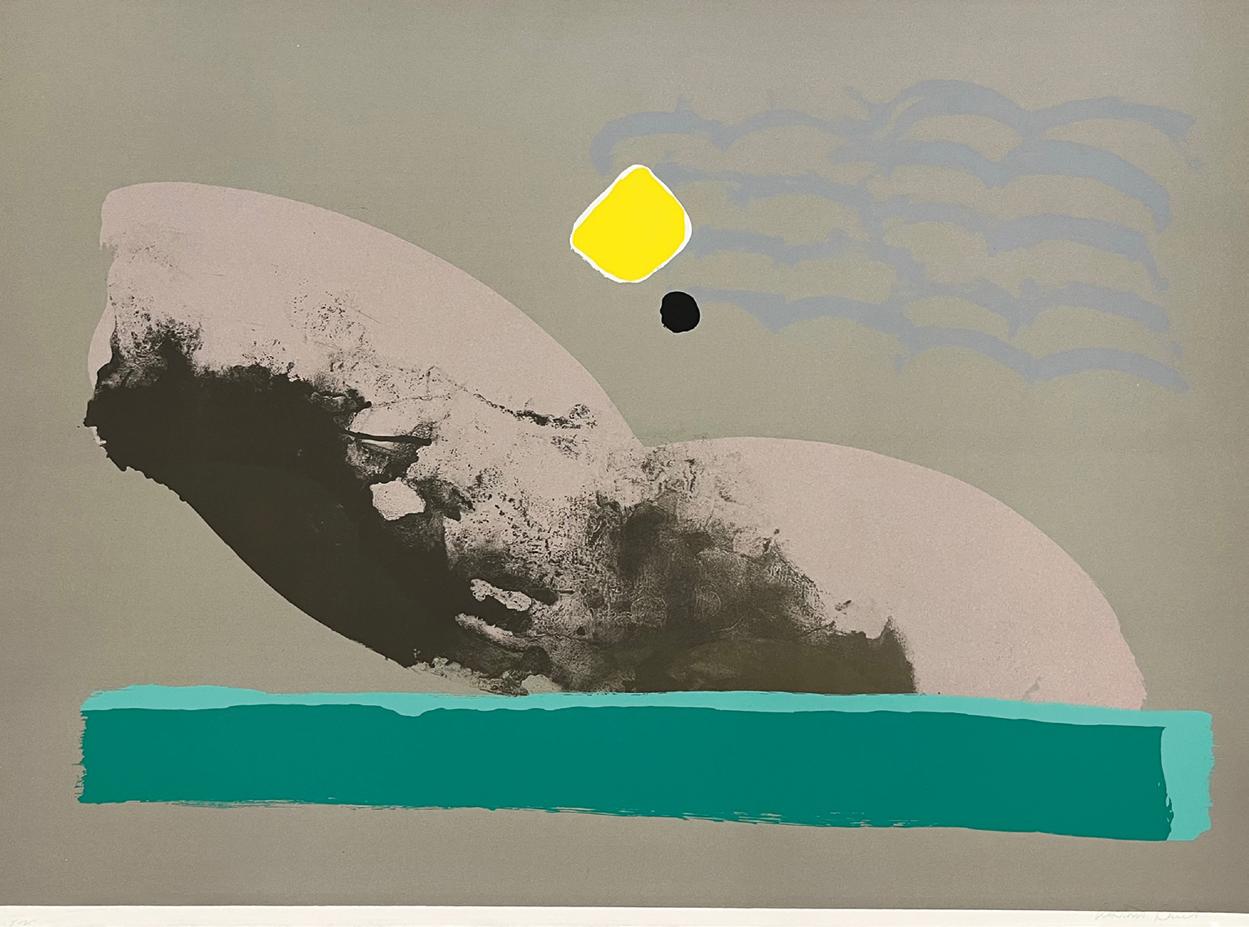
41 Beach Series, Merlimont, 1980-89 silk screen & lithograph, 57 x 77 cm edition 18/20 editioned lower left, signed lower right

42 Barcelona, 1990
gouache, 26 x 30 cm signed lower right
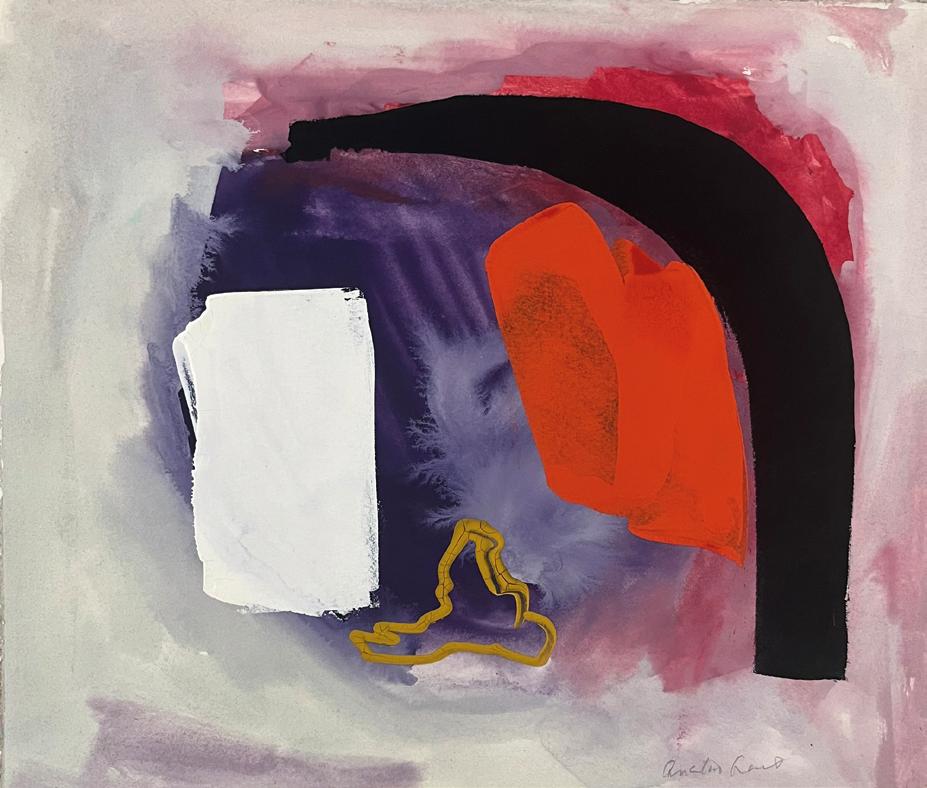
43 Barcelona III, 1990 gouache, 26 x 30 cm signed lower right
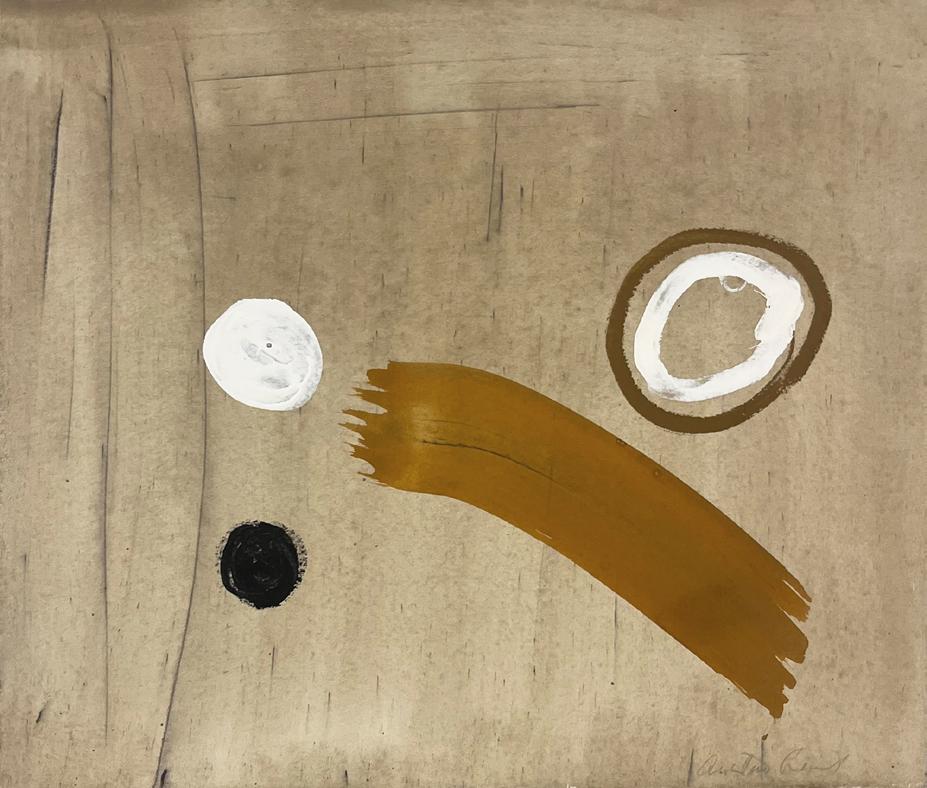
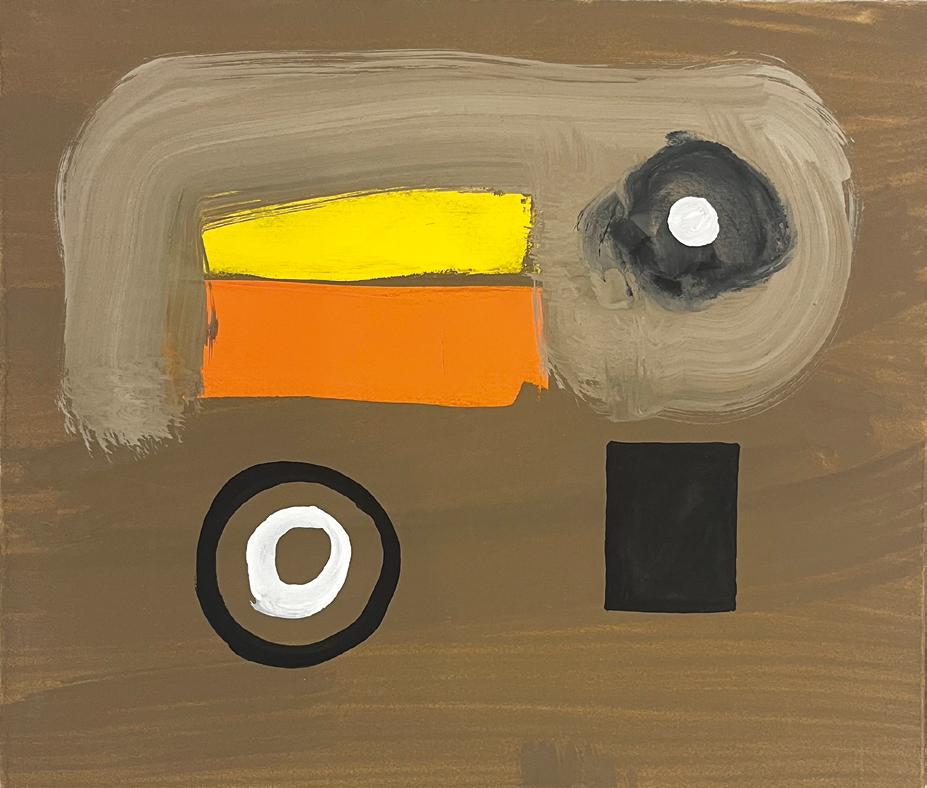
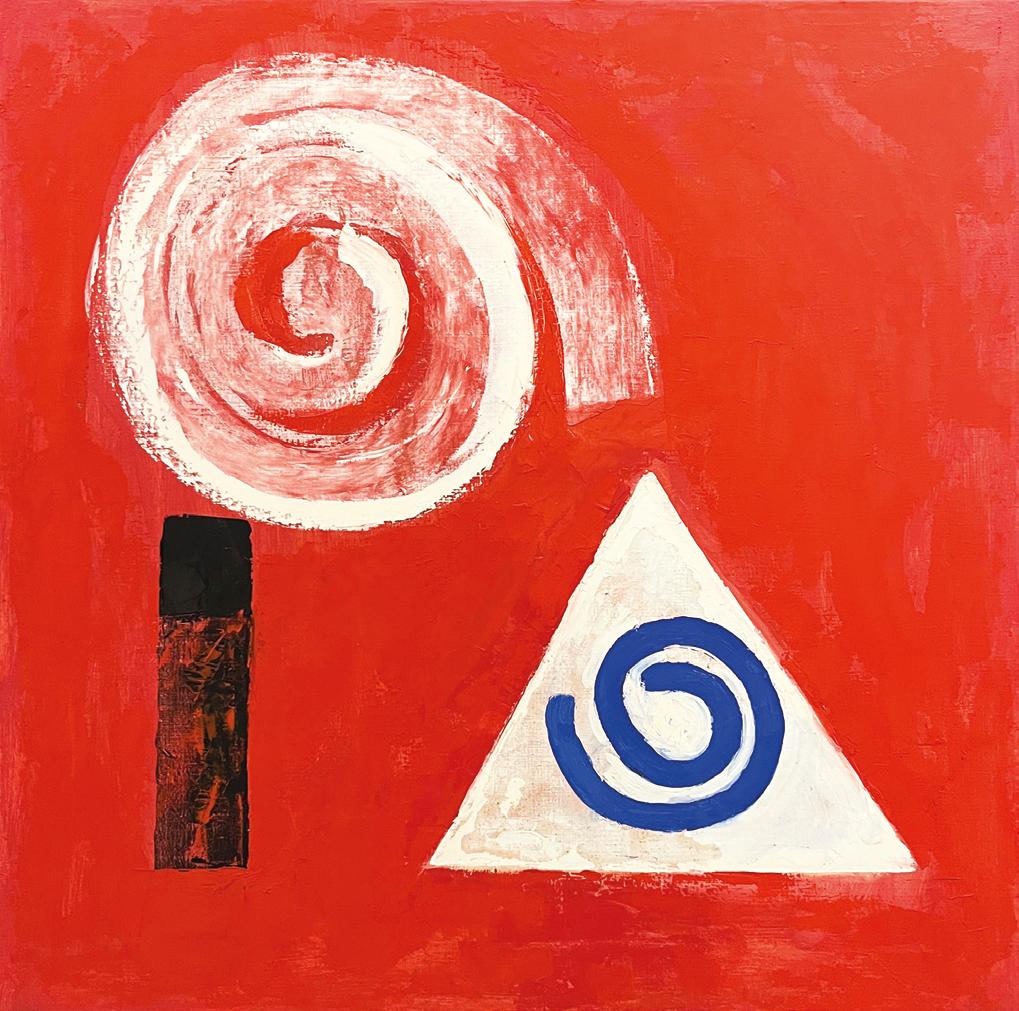

48 Blue Night, c.1993 oil on canvas, 46 x 46 cm signed and titled verso

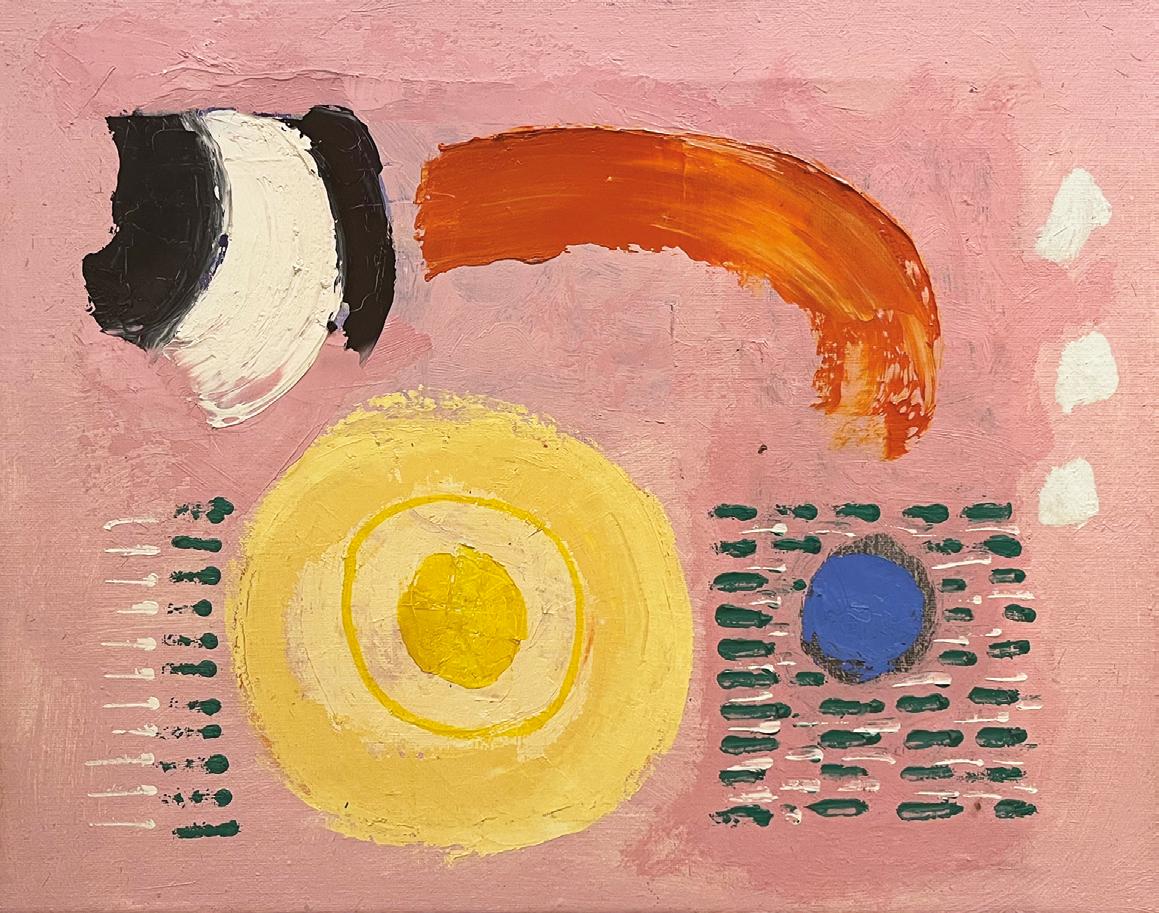
49 Ducasse Étaples, 1990 oil on canvas, 41 x 51 cm signed and titled verso
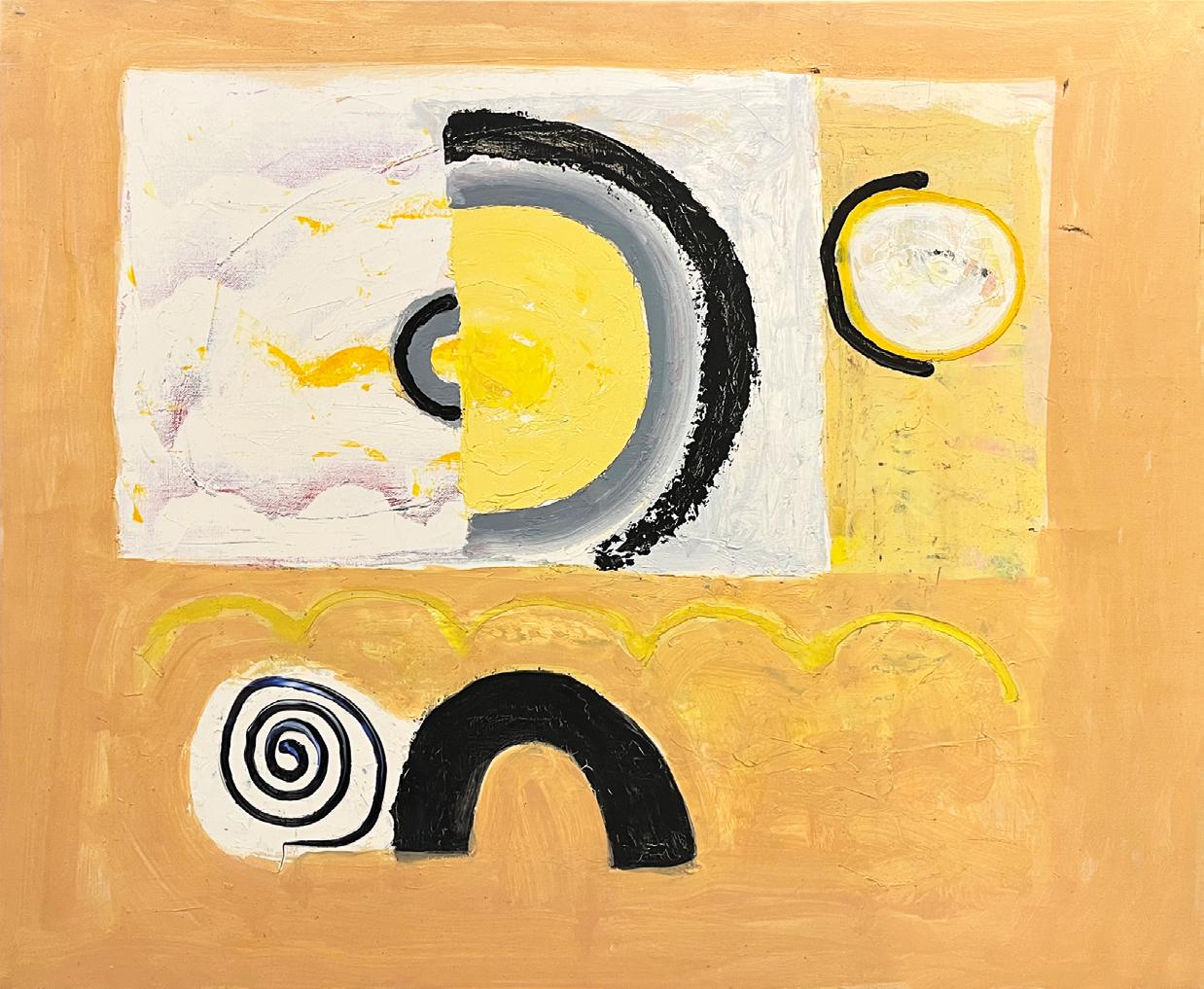
50 Le Touquet Beach, 1992 oil on canvas, 64 x 76 cm signed and titled verso
51 Le Touquet, 1992 oil on canvas, 71 x 91 cm signed and titled verso

52 Le Touquet Paris Plage, 1992 oil on canvas, 71 x 91 cm signed and titled verso

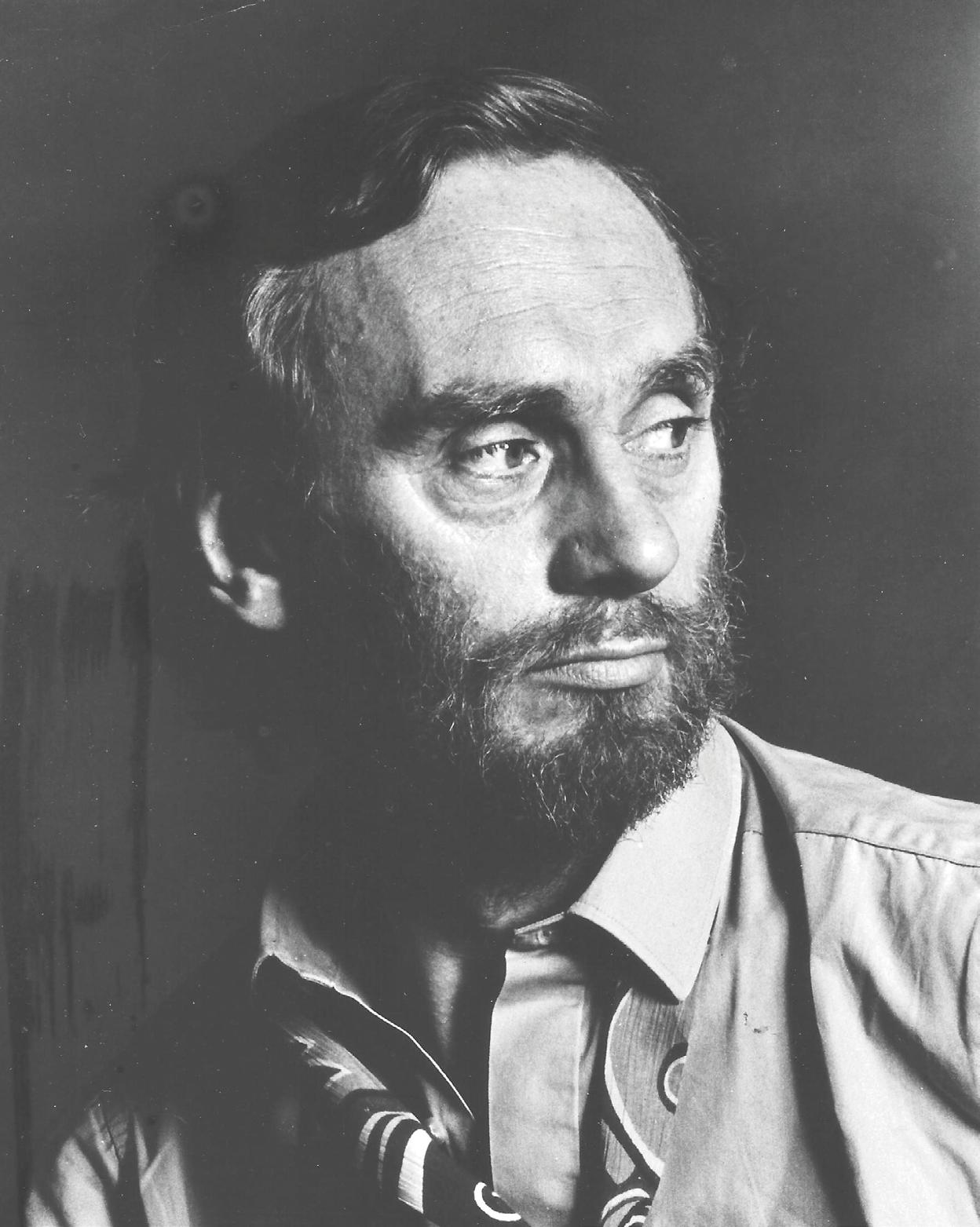
Alistair Grant was born on June 3rd 1925 in West Kensington, London. He was educated at Frobell School but left at thirteen and found a job in a solicitors and estate agents earning 10/ - a week. At first he held ambitions of becoming a veterinary surgeon, however during his entrance interview he observed that the students coming out of the next door art college were ‘Nicer looking than the vets’.
He studied at Birmingham College of Art from 1941-43 where he was taught still-life drawing and painting by FleetwoodWalker. He was then conscripted into the Royal Air Force and trained as Aircrew flying Wellingtons and then Liberators. He was stationed in Egypt before being transferred to Heliopolis where he taught German POWs to paint and draw. Whilst in Egypt, Grant applied to the Royal College of Art and was accepted; he studied there under Carel Weight, Ruskin Spear and Robert Buhler, who were installed under Robin Darwin’s new regime. His fellow students included Norman Adams and Alfred Daniels. He requested to study printmaking and was taught lithography by Edwin La Dell and etching by Robert Austin. He was offered a fourth year by the College to be spent solely on printmaking.
Having finished his course of studies Grant had several part-time teaching
posts including periods at Hammersmith School of Art, St Martin’s School of Art and Colchester School of Art. When Robert Austin retired from the Royal College, La Dell was made Head of Department for Printmaking, Grant was told of a vacancy at the College by Carel Weight. He was interviewed for the post at a party in La Dell’s house by Darwin and was successful, he was appointed Head of Printmaking in 1970 and was made Professor in 1984.
Grant together with Michael Rothenstein, Bernard Cheese, Edward Ardizzone, Anthony Gross and others set up a group known as New Editions. They held print exhibitions at the Zwemmer’s Gallery during the late 1950s and early 1960s when the enterprise ended. He was used as a consultant on several British film productions including The Rebel when he had to advise Tony Hancock on how to behave like an artist. He also worked on The Portrait of Dorian Gray, The Battle of Agincourt and on Privilege with Paul Jones and Jean Shrimpton. When Robert Erskine organised a series of films called Artists proof based on English printmakers, Grant was used to illustrate the technique of lithography.
Alistair Grant held regular one-man and mixed exhibitions at leading English, European and American galleries.
1925 Born in London
1941-43 Birmingham School of Art
1943-47 Aircrew, Royal Air Force
1947-50 Royal College of Art, Painting School
1951-53 Teacher of art at St. Martins School of Art, Hammersmith School of Art, Sidcup School of Art and Colchester School of Art
1955-70 Tutor in Printmaking Department, Royal College of Art
1970 Appointed Head of Printmaking Department, Royal College of Art
1984 Chair Printmaking Department, Royal College of Art
1990 Retired, Royal College of Art
Appointed Professor Emeritus, Royal College of Art British Council Selector for 19th Print Biennale, Ljubljana
1990-97 Working in London and Étaples-sur-Mer, Normandy
1997 Died in London

1955 Zwemmer Gallery, London 1985 Le Cadre Gallery, Hong Kong
1956 St. Georges Gallery, London 1985 Redfern Gallery, London
1960 Zwemmer Gallery, London 1986 Oxford Gallery, Oxford
1960 Bear Lone Gallery, Oxford 1987 Redfern Gallery, London
1961 Zwemmer Gallery, London 1990 Royal College of Art, London
1964 Editions Aledo, London 1990 The Scottish Gallery, London
1965 Balclutha Gallery, London 1991 Zwemmer Gallery, London
1967 Zaydler Gallery, London 1991 Musee du Touquet-Paris-Plage,
1968 Zaydler Gallery, London Le Touquet, France
1968 William Ware Gallery, London 1993 Musee du Touquet-Paris-Plage,
1968 Howorth Gallery, England Le Touquet, France
1971 Oxford Gallery, Oxford 1994 Art First, London
1973 Raimondi Gallery, Milan 1994 New Academy Gallery, London
1974 Polytechnic of Central London 1995 Art First, London
1974 Morley College, London 1996 New Academy Gallery, London
1979 Limited Editions, London 1997 Galerie Mischkind, Lille
1984 Graffiti Gallery, London 1997 Art First, London
Arts Council of Great Britain
Beaverbrook Art Gallery, Fredericton, New
Brunswick, Canada
Boston Public Libraries, USA
The British Museum, London
Cairo Art Gallery, Egypt
Carlisle Art Gallery
Chelsea & Westminster Hospital, London
Chicago Art Institute, USA
Cincinnati Museum of Fine Arts, USA
Dallas Art Gallery, USA
Dallas Museum, USA
Ferens Art Gallery, Hull
Government Art Collection
Greater London Council
HRH The King of Sweden
Hunterian Museum, Glasgow
Isle of Man Arts Council
Leicester Education Authority
Lessing J. Rosenwald Collection, USA
Musee du Touquet, Le Touquet, France
Museum of Modern Art, New York, USA
National Gallery of South Australia
National Museum of Stockholm, Sweden
New York Public Library, USA
Tel Aviv Museum, Israel
The Tote Gallery, London
Vancouver Art Gallery, Canada
Victoria and Albert Museum, London
Victoria Art Gallery, Canada
Published by The Scottish Gallery to coincide with the exhibitions:
A Collector’s Eye
F.C.F. Valentine | Post-War Prints
Alistair Grant | A Sense of Place
3 - 26 October 2024
Exhibition can be viewed online at: scottish-gallery.co.uk/valentinecollection scottish-gallery.co.uk/alistairgrant
ISBN: 978-1-912900-90-9
Designed and Produced by The Scottish Gallery
Photography by John McKenzie
Front cover: Sonia Delaunay, Thunderbird, 1973, screenprint, 76 x 55.5 cm (cat.13)
Back cover: Alistair Grant, Black Reflections, c.1970, etching, 35 x 50cm (cat.39)
Biographies for the Valentine Collection have been sourced and edited using Wikipedia, Art UK, published obituaries and other online resources.
All rights reserved. No part of this catalogue may be reproduced in any form by print, photocopy or by any other means, without the permission of the copyright holders and of the publishers.


